After trekking along the Kokoda Track we had lots of conversations about the gear we had chosen, the gear we didn’t pack, and the gear we did pack but wish we hadn’t. I decided to create this blog post to share these insights and tips to help you prepare for the Kokoda Track.
This is the ultimate packing list for everything you need on the Kokoda Track detailed with reasons about why you need each item. Packing for any expedition is no easy task. Trying to think of what you might need on day 6 of The Kokoda Trail before you even left your own country can be a confronting task. Alas, if you’re reading this it means you’re probably gearing up in preparation for your trip to the Kokoda Trail.
BEST INSURANCE FOR TRAVELERS
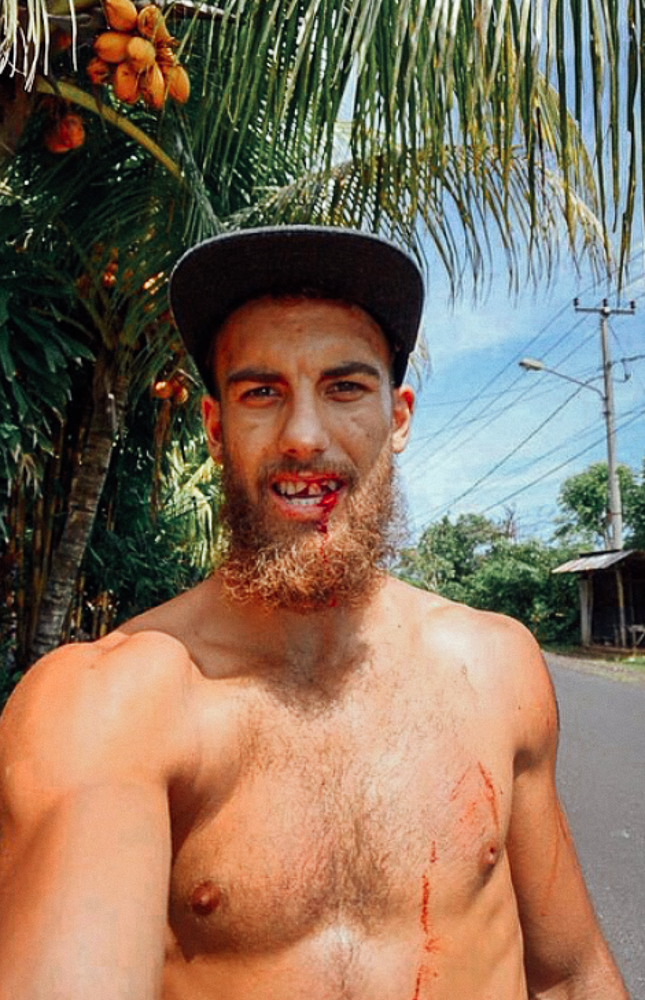
Don’t wait for an accident to happen… get insured! My travel insurance is HeyMondo which offers low-cost travel & medical insurance. That’s me on the left with three teeth knocked out after a motorbike crash in Bali!
You can click to read my Full Review of the Best Travel Insurance.
I’ve made several successful claims with HeyMondo and find their customer service very quick and helpful. Click the button below to get a 5% DISCOUNT
As you work your way through this article, you’ll be prepared for everything and everything the Kokoda Trail tries to throw at you. In Papua New Guinea, the locals will continually tell you to “expect the unexpected”. The Kokoda Trail will have you walking through head-high grass, knee-deep mud, rivers, and over precarious bridges. Being prepared for these challenges will put your mind at ease and allow you to truly soak up the ever-changing landscapes of the Kokoda Trail. This packing list will prepare you for your wild 96km adventure along the famous Kokoda Trail.
THE ULTIMATE KOKODA TRAIL PACKING LIST
I’ll break this post up into three sections & a bonus camera section.
- Hiking gear, trail clothes, and equipment you need.
- Gear for the campsite, sleeping, warm clothes
- Other items such as medicine, accessories
- Camera section (if you are interested in photography)
HIKING GEAR AND TRAIL CLOTHES
RE-USABLE WATER BOTTLE
My Earthwell re-usable bottle doesn’t leave my side. Tucked on the side of my backpack, it keeps my water refreshingly cold for extended periods of time. In the dense jungle canopies, you’ll find yourself sweating in excess. Having the Earthwell flask filled with an electrolyte drink is a hot tip to keeping yourself in good working order. There are plenty of places to refill your bottle, so there is absolutely no need for you to use any single-use plastics along the Kokoda Trail. The Hydroflask is insulated and built to last, it won’t let you down.
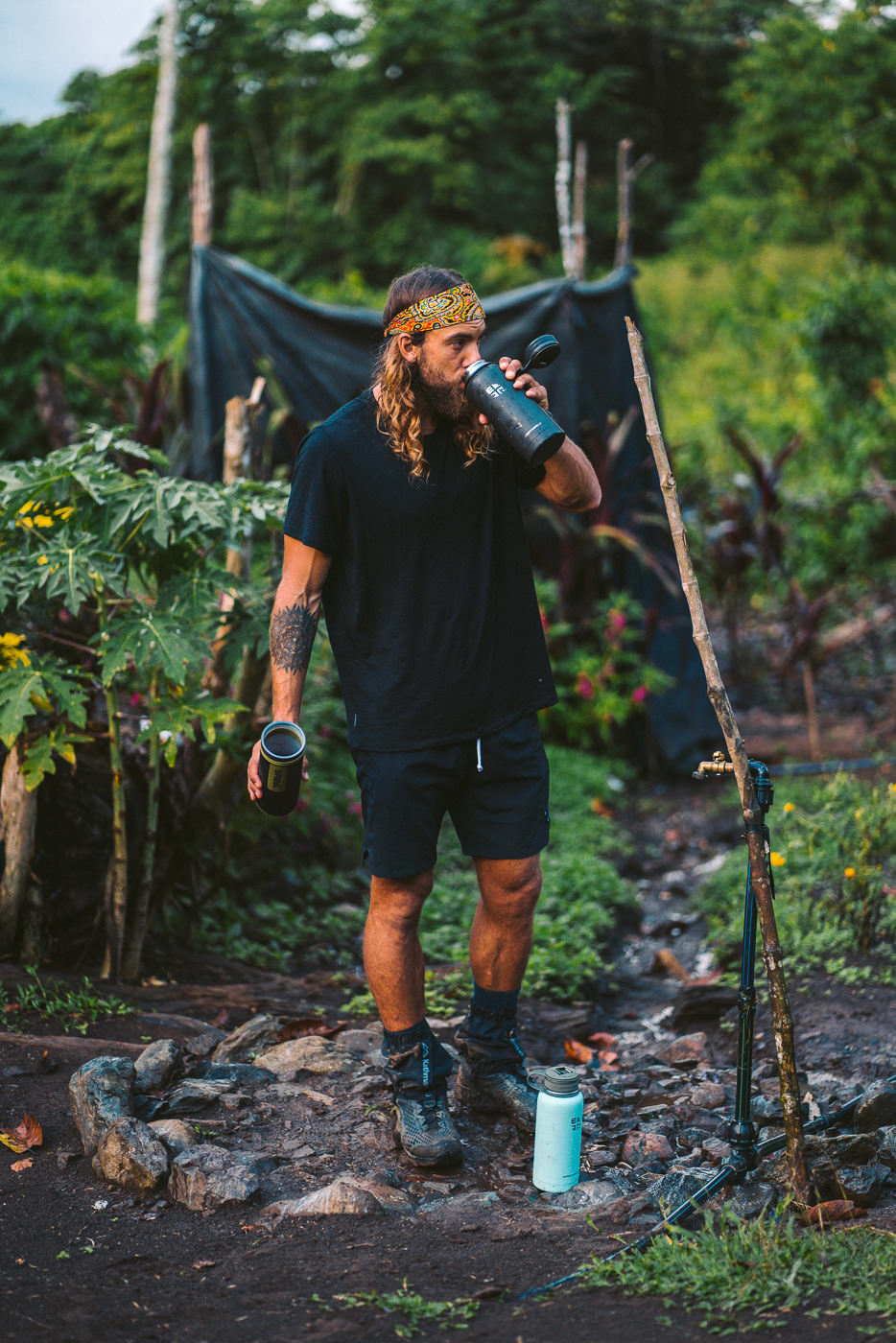
GRAYL ULTRALIGHT WATER PURIFIER
The Grayl Ultralight Water Purifier is an understated game-changer for adventure travel. The Grayl Ultralight Water Purifier removes 99.9999% of viruses of disease-causing bacteria. The best thing about it, it only takes 15 seconds and one press to purify water from any freshwater source. Along the Kokoda Trail, we filled up from rivers, waterfalls and local village taps. Unlike aqua purification tablets which require you to wait 30 minutes before drinking, you can have rehydrated yourself immediately with the grail ultralight water purifier.
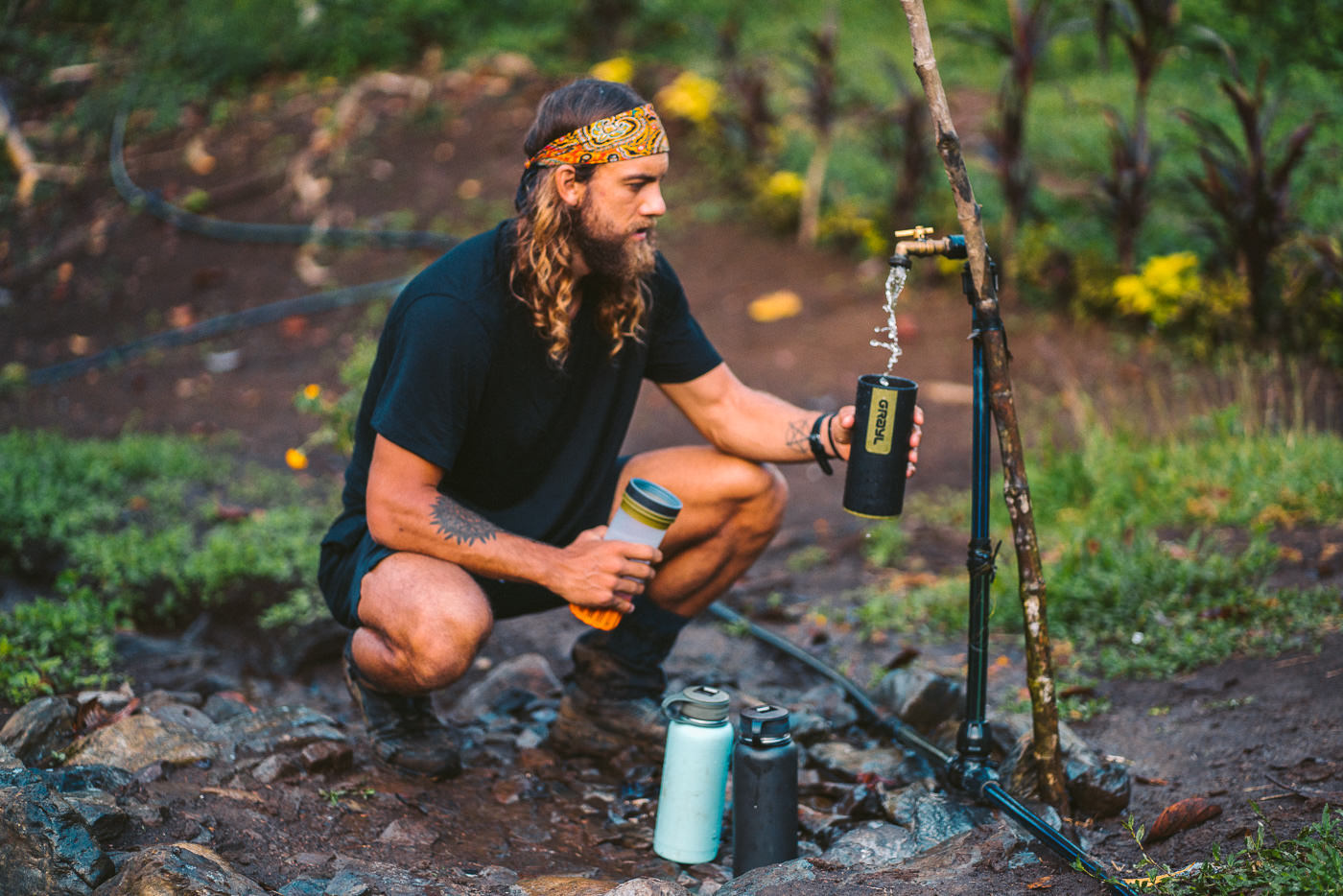
HIKING BOOTS
Depending on your ability, you’re more than likely going to be out on Kokoda Track for anywhere between 7-12 days. To put that in perspective, you could accumulate 50-80 hours of direct time-on-legs hiking. Your future self will be grateful if you get yourself some quality boots. With undulating terrain and never-ending tree-roots, your hiking boots will provide the necessary stability and support. I’d recommend waterproof hiking boots to shield off the rain and puddles.
GAITERS
Gaiters are incredibly helpful for keeping mud, stones, and debris out of your shoes and socks. Not only will they keep your shoes and socks in better conditions but they’ll reduce the chances of blisters, cuts, and grazes. Make sure you buy gaiters with zip as velcro won’t hold strong verse the demanding conditions of The Kokoda Track. We used gaiters that covered our ankles, but I’d recommend something that covers at least to the middle of your shin
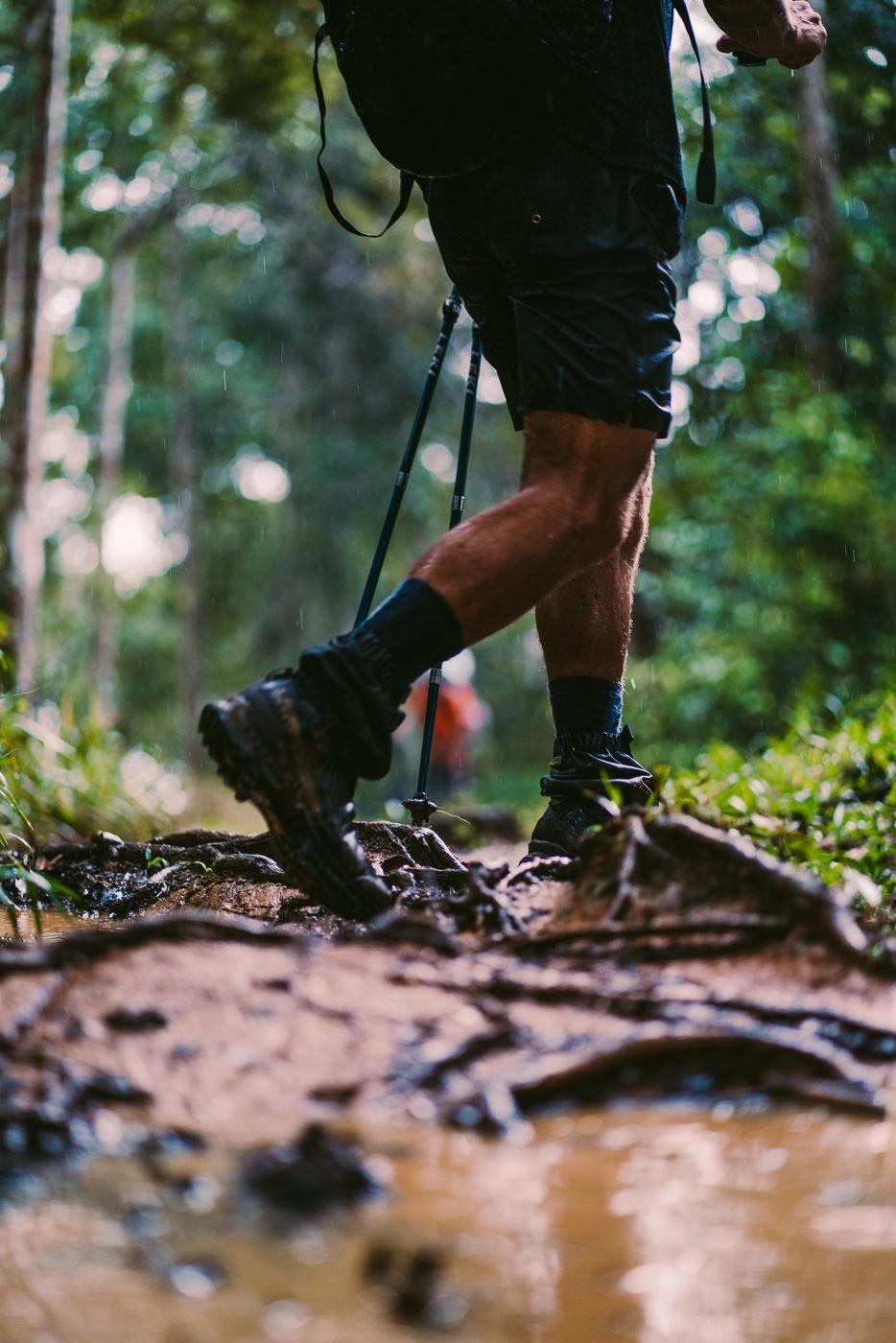
TREKKING POLES
Trekking poles have been one of the best additions to my backpack this year. The Kokoda Trek has punchy uphill sections and steep downhills. Most people prepare for the uphill sections but don’t realize that the downhill will bring the most discomfort. Trekking poles help take the load off your knees and legs and provide extra points of contact with the ground to keep you from slipping.
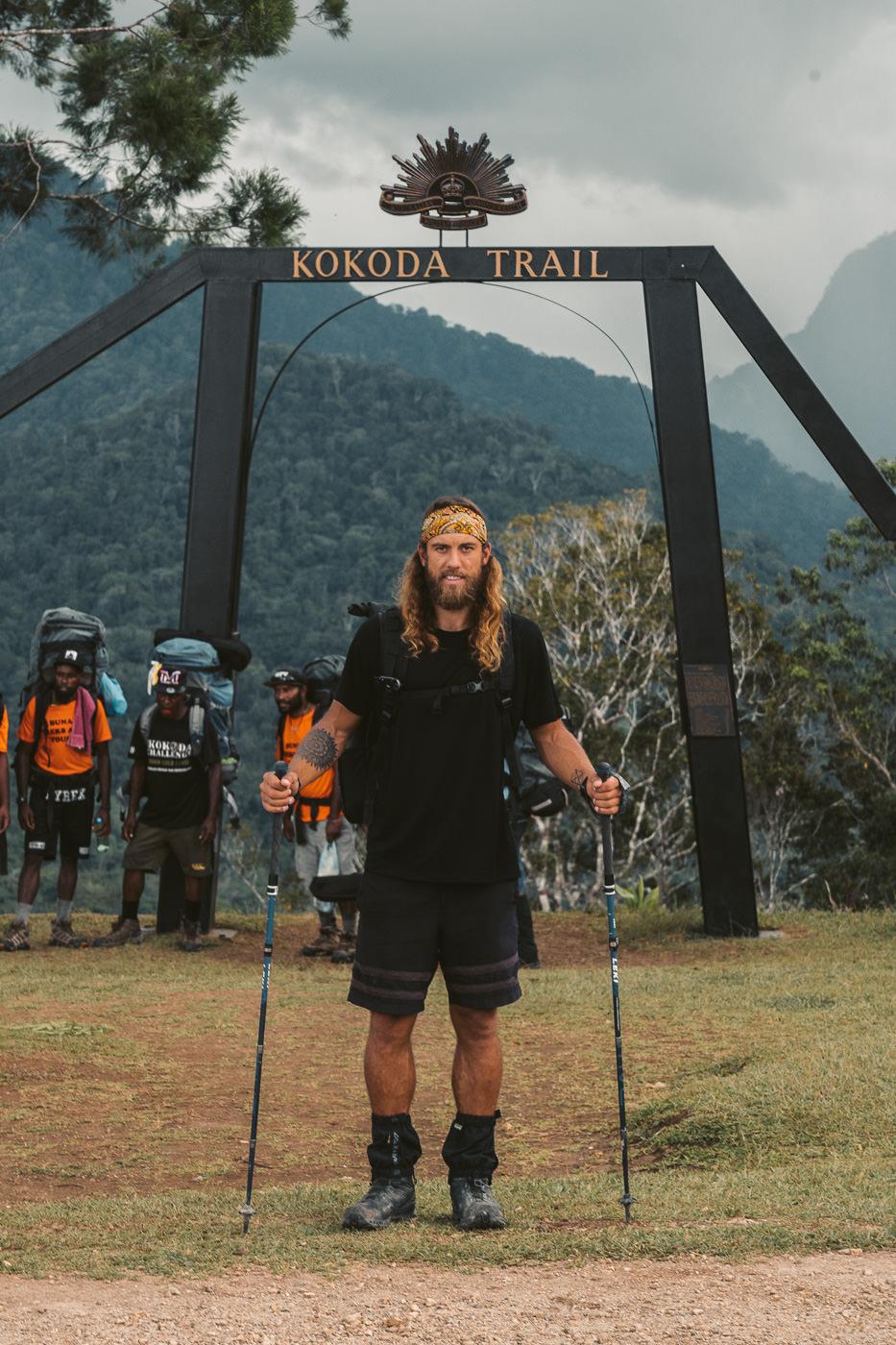
LARGE BACKPACK
There are two ways to do the hike. You can carry everything in a big bag of your own or your guide will carry your camp gear and you just carry a smaller daypack with a camera, rain jacket, water, and accessories.
If you carry your own large backpack the guides recommend to carry no more than 10-12kg or you will really struggle with the 96km and the 6000m of incline throughout the week. Therefore a 60l backpack will be sufficient.
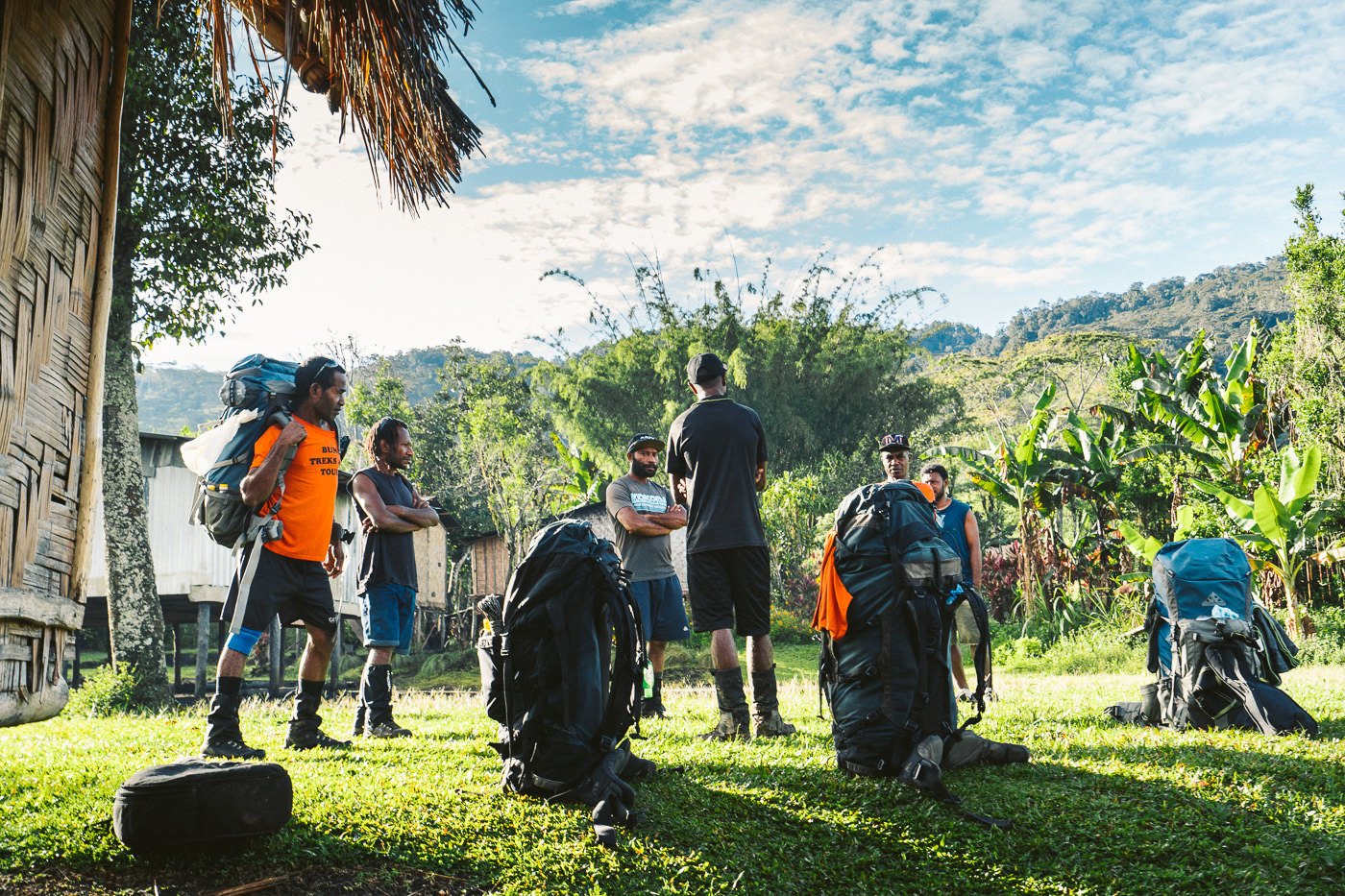
DAYPACK
I carried a daypack with my camera gear. The one I used on this trip was a Wandrd 31L PRVKE. It’s good for organizing your gear. It struggled a bit in the heavy rain even with the rain cover so I put everything inside plastic bags inside the bag. Overall it did a good job for me but you need a strong back and shoulders to deal with it as it isn’t a hiking bag specifically. A 30L is a good size or if you don’t have cameras you could go even less.
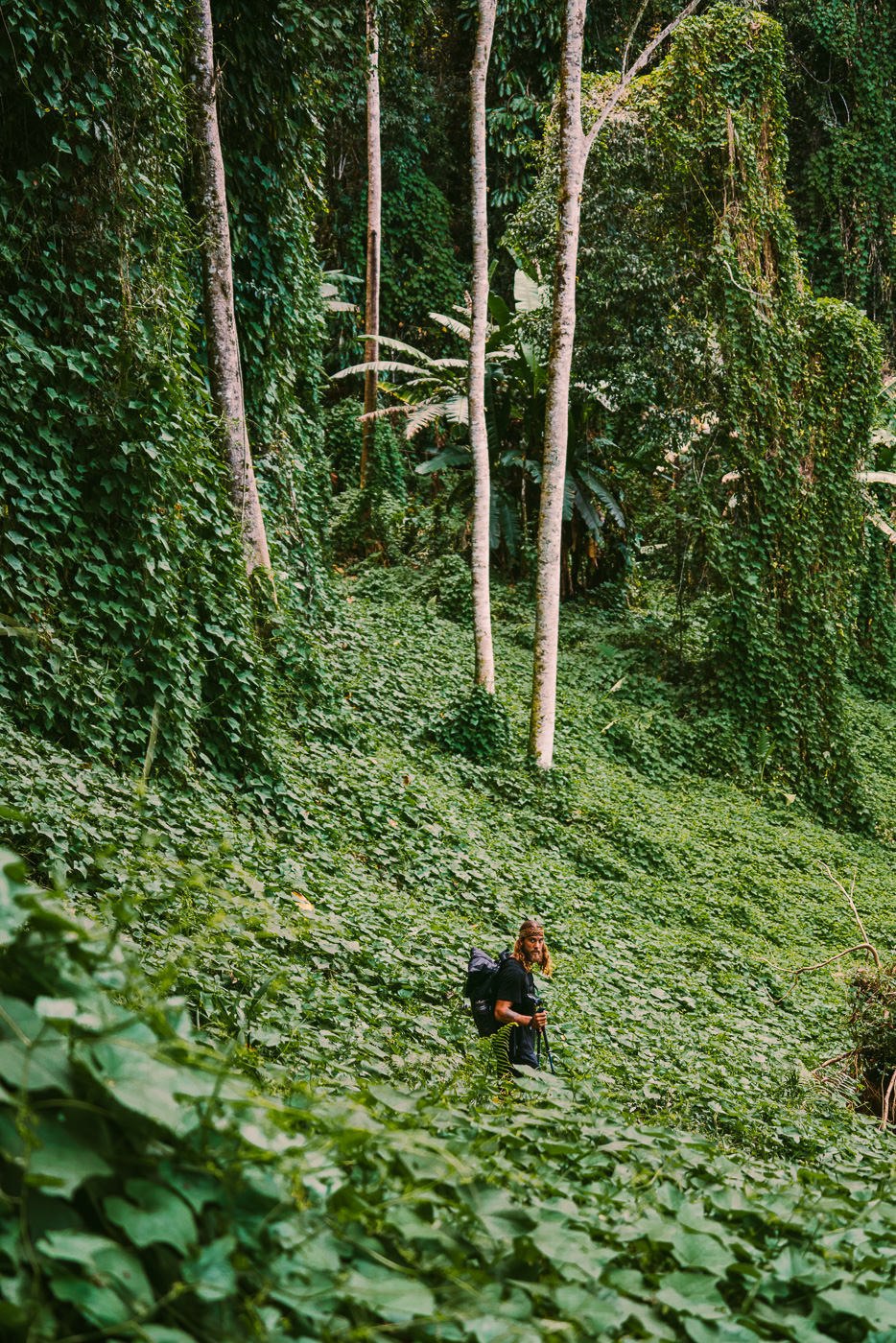
HIKING PANTS
Depending on the level of protection you’re after, it may be worth considering a pair of light-weight hiking pants. Personally, we wore shorts with crew length socks and gaiters and that was sufficient. However, if you want to avoid getting scratched up in the dry season of Kokoda then hiking pants may be worthwhile.
ACTIVEWEAR T-SHIRT
I completed Kokoda using one shirt! Choose a t-shirt that dries quickly and uses an anti-stick material. You’ll be able to wash your clothes in the river most days along with drying it by the fire. I had one set of clothes at camp each night and then tried to dry my hiking set of clothes each night. Some mornings they were damp, to begin with. Two shirts on rotation would be a luxury but not a necessity.
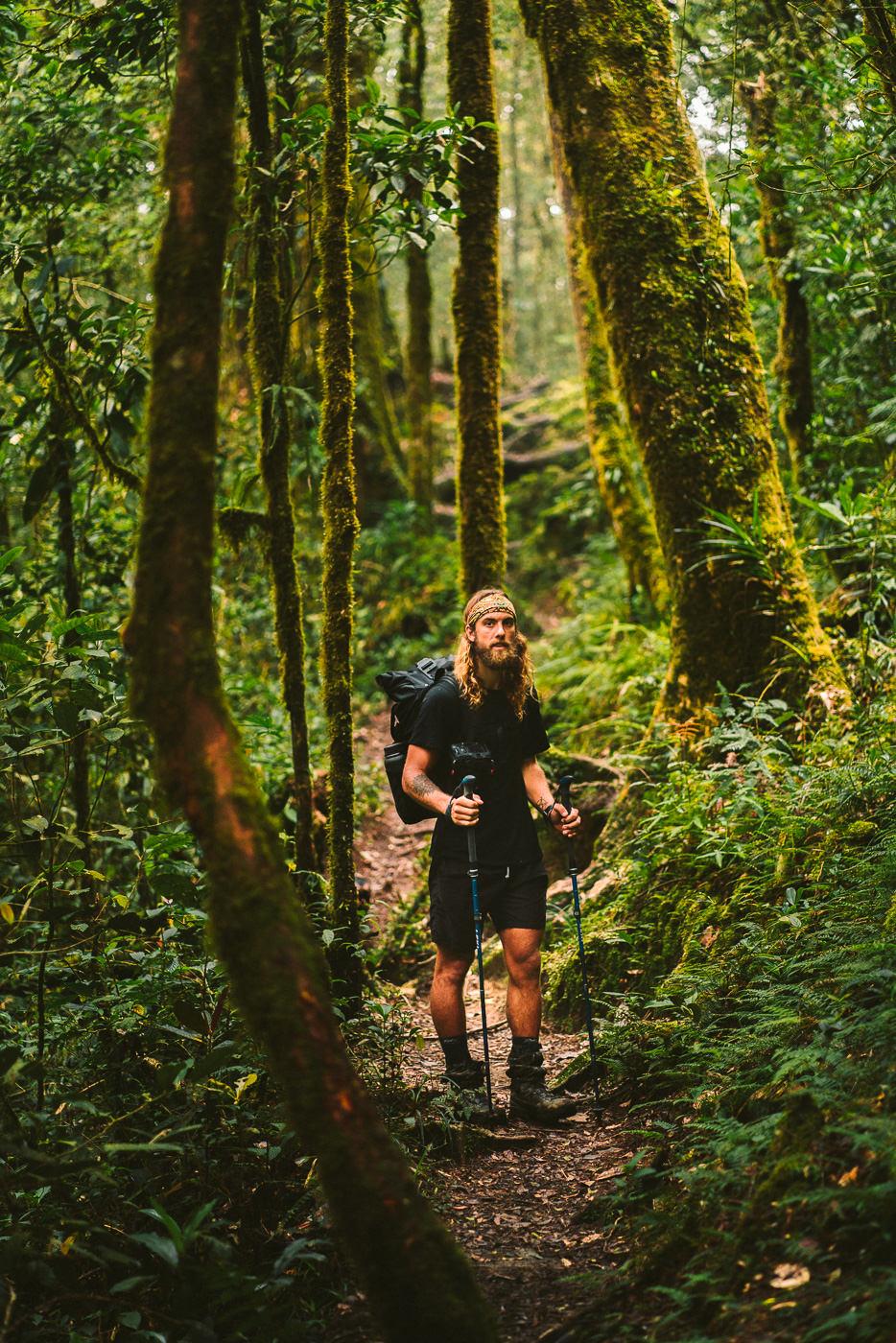
LIGHT PANTS
Having a pair of tracksuit pants or lightweight dry pants that you can change into each night is both comfortable and practical. Once you’ve made it to the campsite, it’s the perfect time to recover and rest.
HIKING SOCKS
Quality over quantity. I’d recommend 2-3 pairs of crew socks made from merino wool. They’ll cushion your feet and keep shape no matter how dirty or wet they get. Your socks are going to be wet most of the trip, make sure you have ones that don’t slip around in your shoe. The Merino fabric means that you don’t really stink too much and the thick hiking style means you don’t get blisters like regular sports socks.
UNDERWEAR
A rotation of 2-3 pairs will be enough. If you wash and dry your clothes each night, you can really keep the weight down. I used a spandex style trunk to prevent chafing from cotton-style undies.
SPORTS BRA
I’m obviously not an expert on this topic but I’d imagine a sport-style version to deal with the daily sweating, damp conditions will help rather than other fabrics.
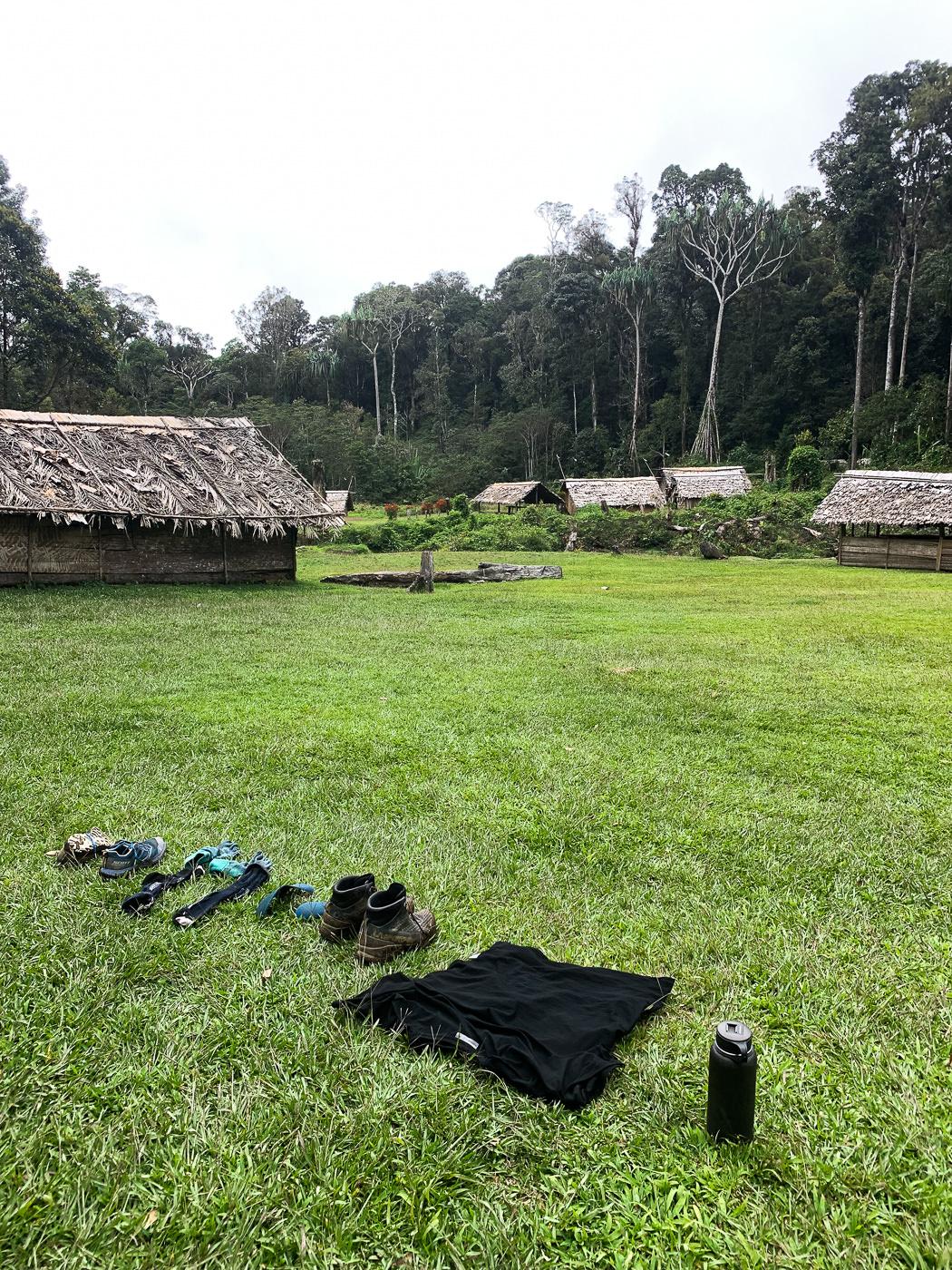
FLIP-FLOPS
Flip-flops are particularly useful for shallow river crossings. If your shoes haven’t been soaked by the rain, it’s better to keep them dry whilst you can. Switch out your hiking boots and put on a pair of flip-flops to maneuver through the rocks underwater. Looking after your feet on Kokoda is incredibly important, wearing flip-flops and allowing your toes to dry out around camp is another power play. Some people brought water shoes but the river-crossings are so short that it is just another wet thing to carry around. Flip-flops doubles as a shoe to wear around camp at night rather than a wet water shoe.
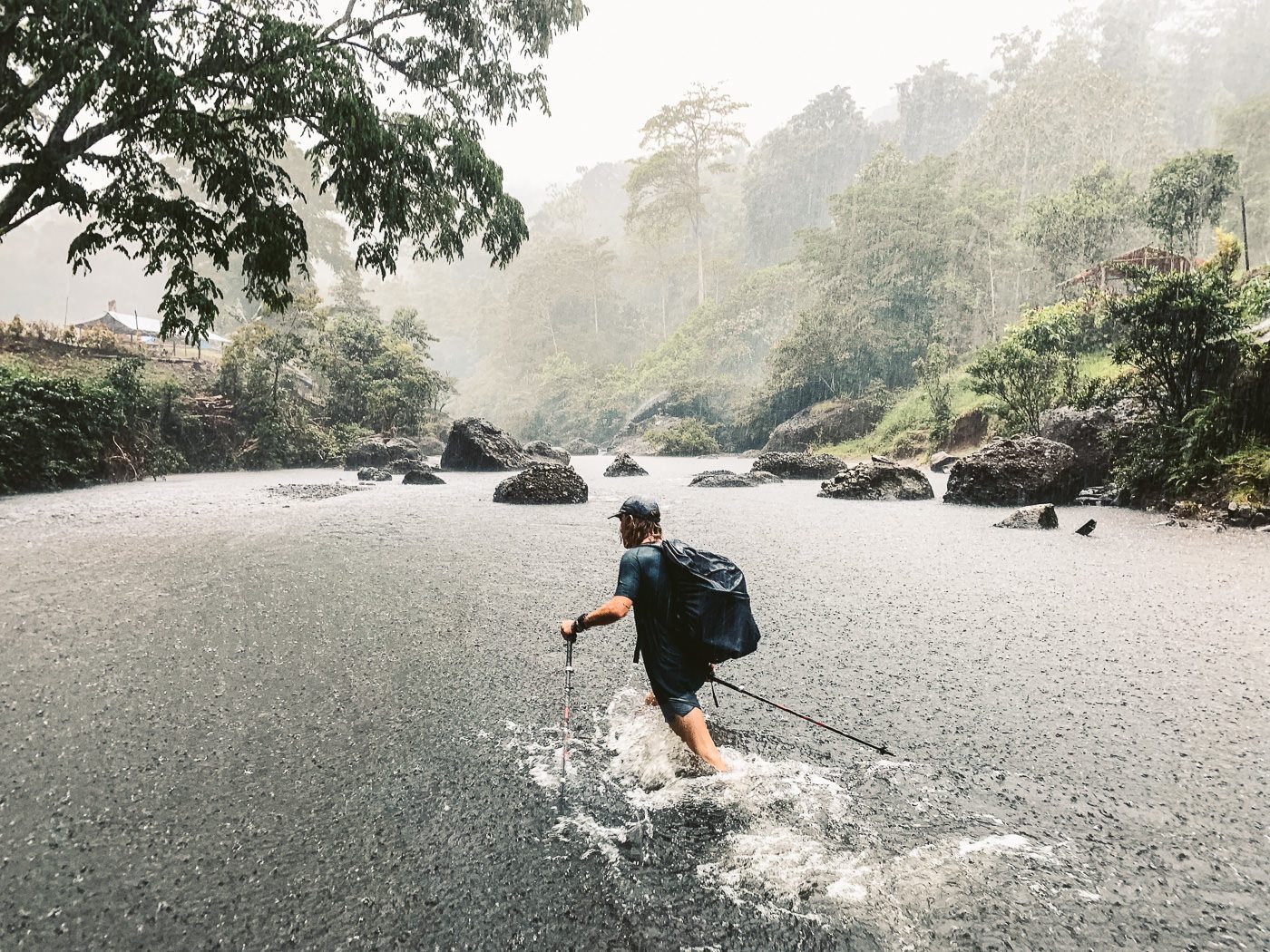
HAT
A lot of the time you’ll be covered by dense jungle canopy, however, there are times of direct sun during the middle of the day that might catch you off guard.
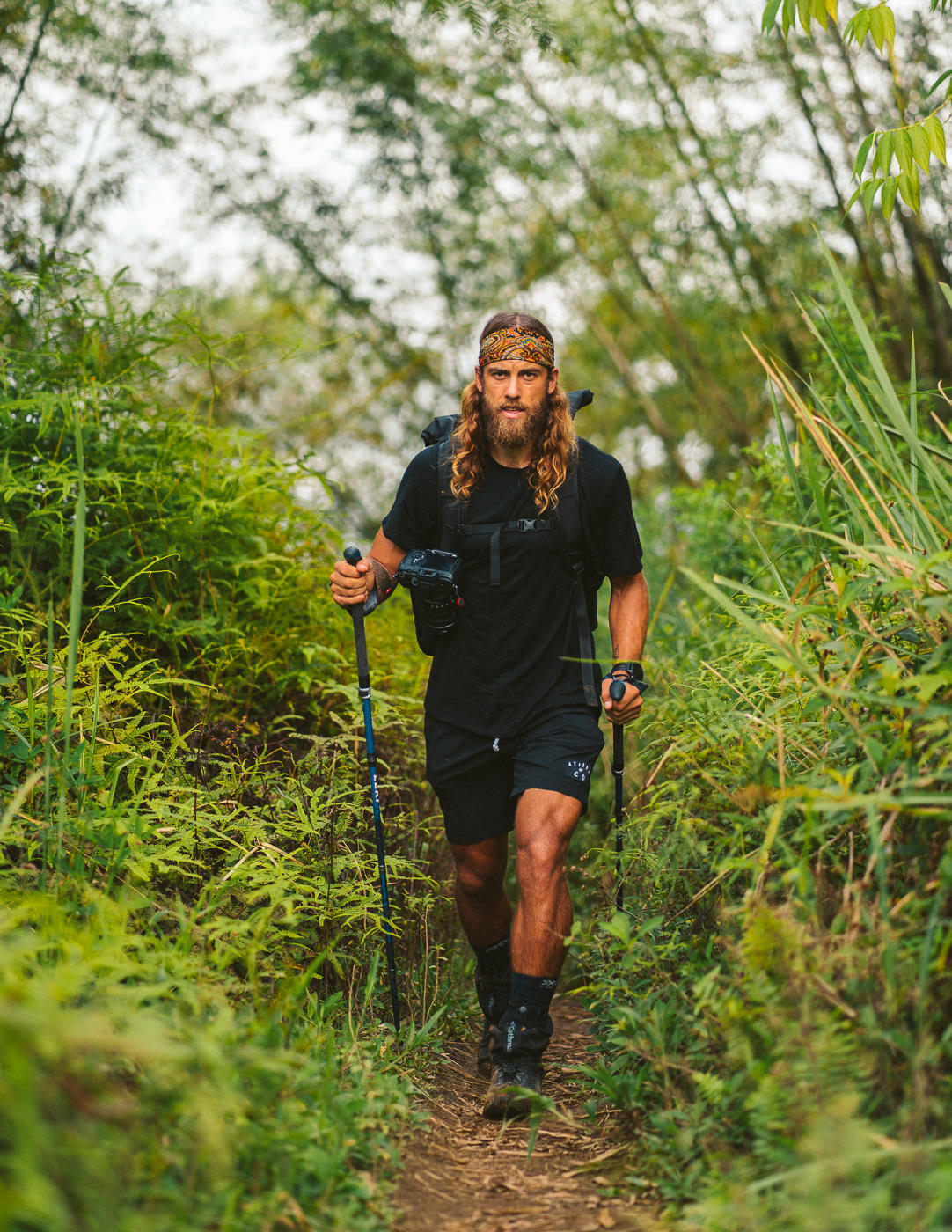
RAIN JACKET
If you don’t want to embrace the rain, throw on a lightweight rain jacket. Having a rain-jacket at camp is useful when you have to make a journey outside of the hut. It rained every single afternoon and night on our Kokoda trek.
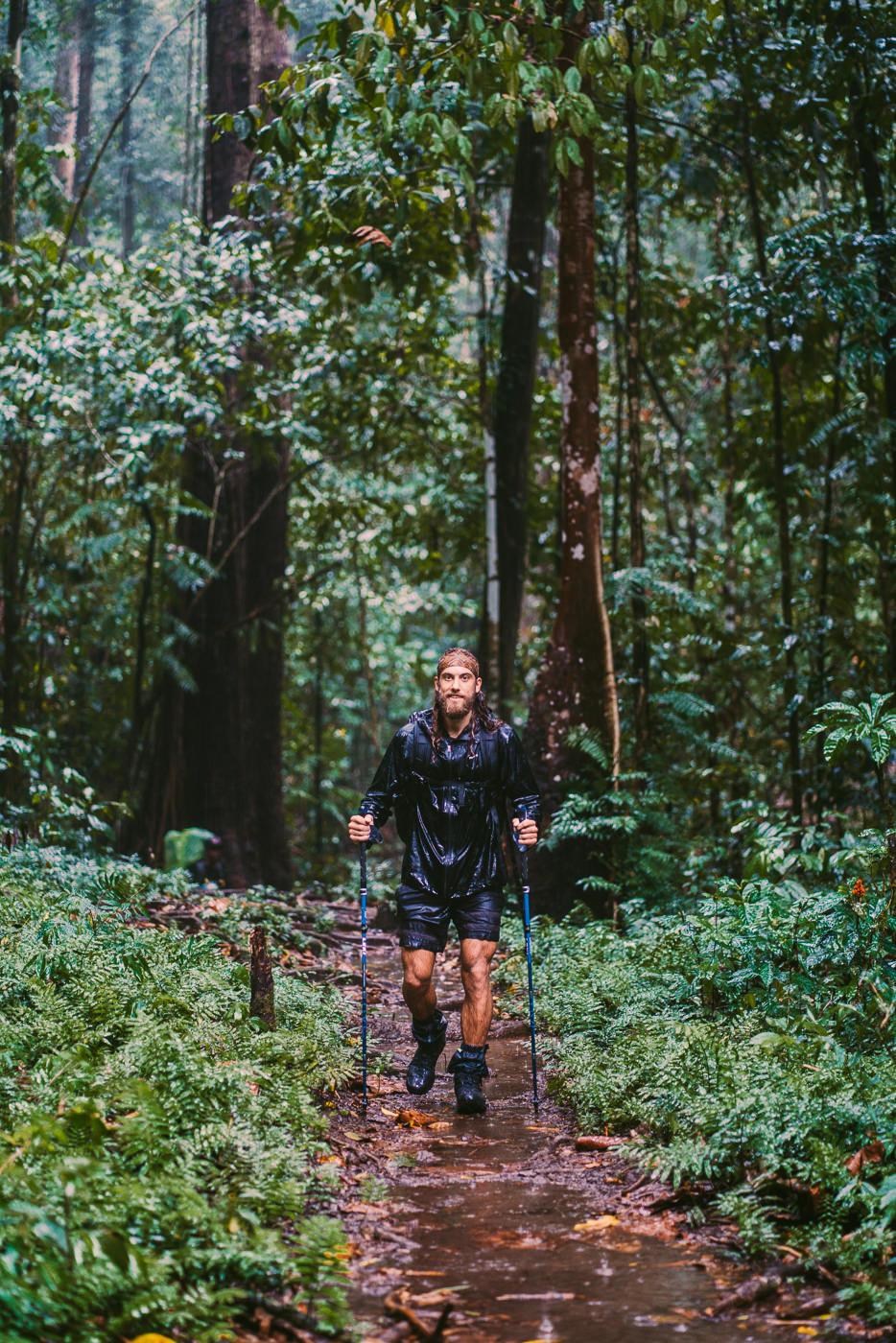
BACKPACK COVER
An essential piece of equipment is a backpack rain cover. It rained every single day of our trek and there is often no shelter and no stopping. Therefore you want to be able to hike through the rain without all of your gear getting saturated. We had our electronics in plastic bags inside our packs as well but the outer backpack cover is the shell that does the most when protecting your gear from the rain.
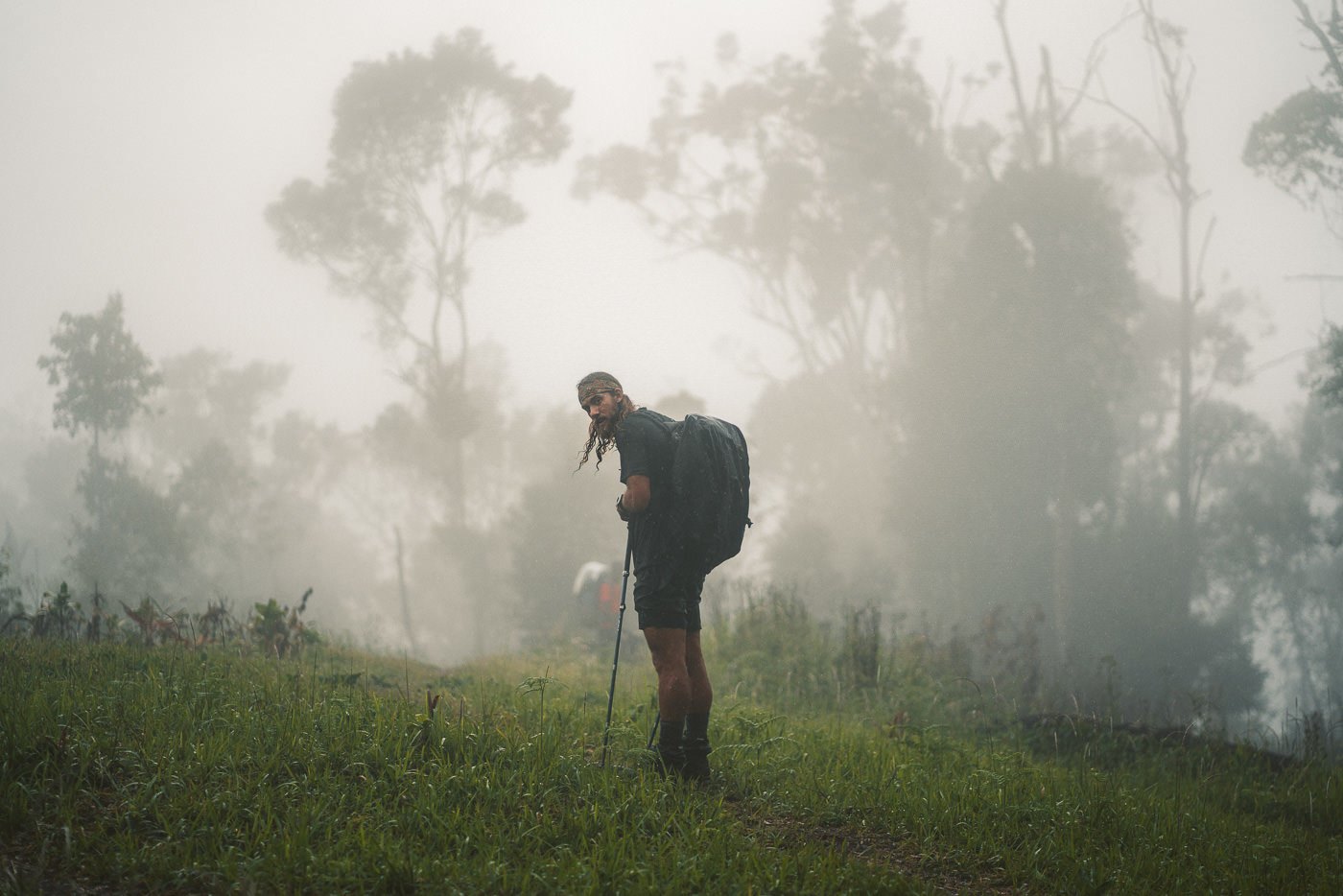
SWISS ARMY KNIFE
You never know when you’re going to need it, but I guarantee you will. We used our swiss army knife to mend our trekking poles, cut toenails, fix blisters and other little issues.
MOSQUITO NET
Our guides carried the mosquito net and we used it every night. They say prevention is better than cure, keep the mosquitos at bay. Nobody wants malaria.
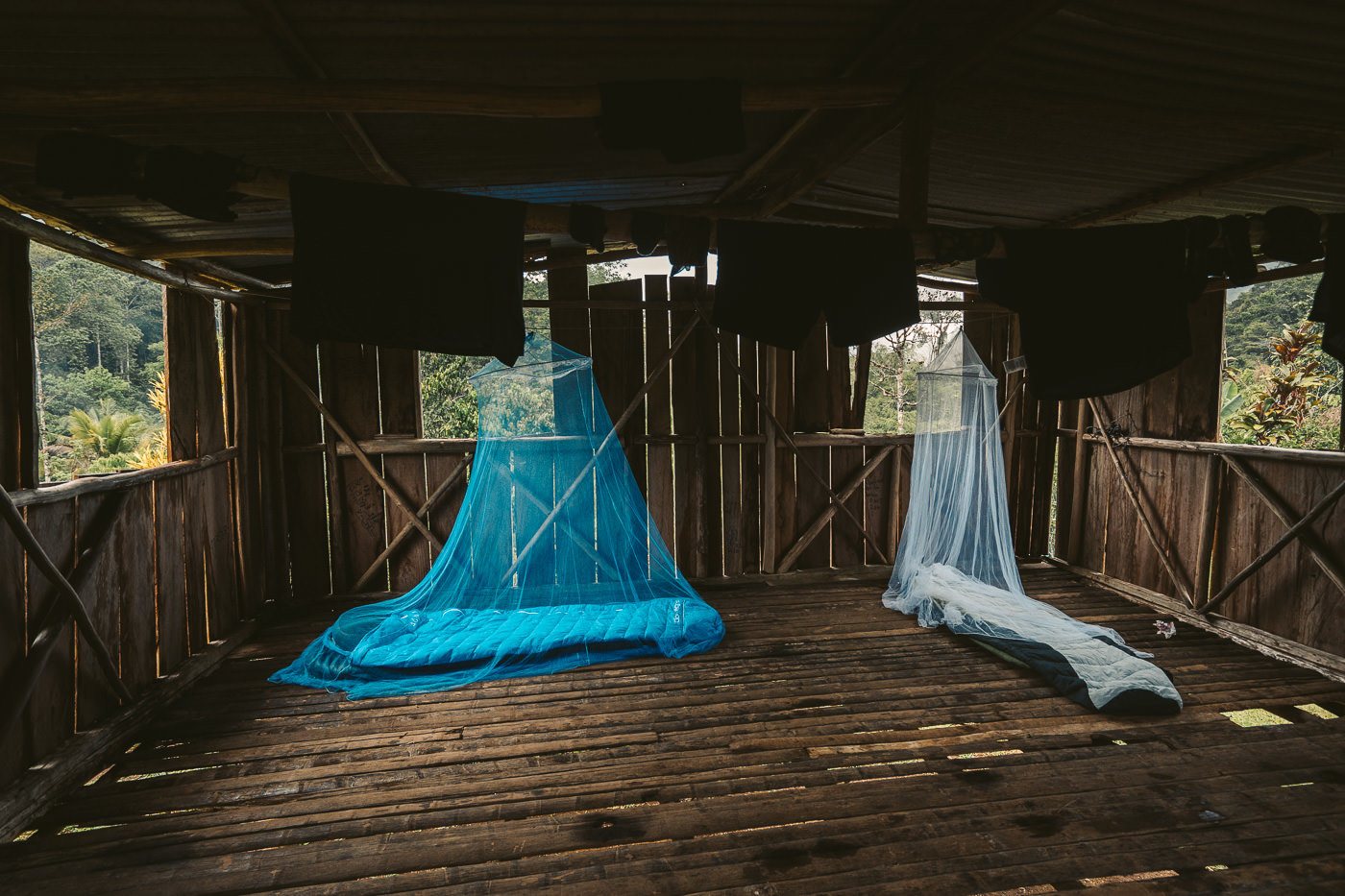
UTENSILS
Your tour guide may provide but you may need to bring your own bowl, mug, knife, fork and, spoon.
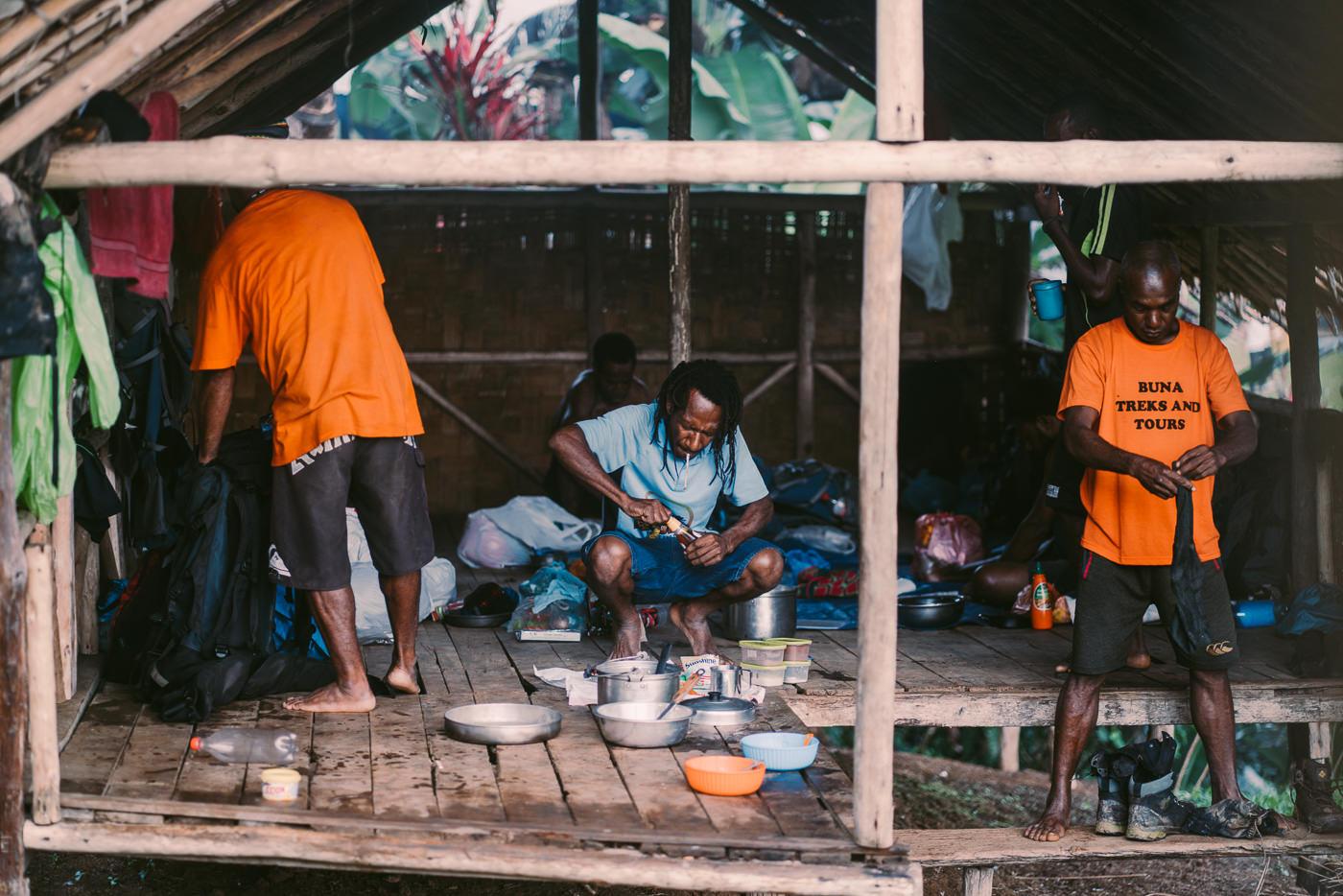
DRY BAG
We packed all our important gear in a dry bag and then placed it inside our backpack for extra protection. When you’ve seen as many people lose their phones or camera gear to water damage as I have, you’ll understand why I place so much importance on a waterproof dry bag. A quality dry bag will do as it suggests by keeping your belongings air-tight even if the bag happens to become fully immersed in water during river crossings or heavy rain.
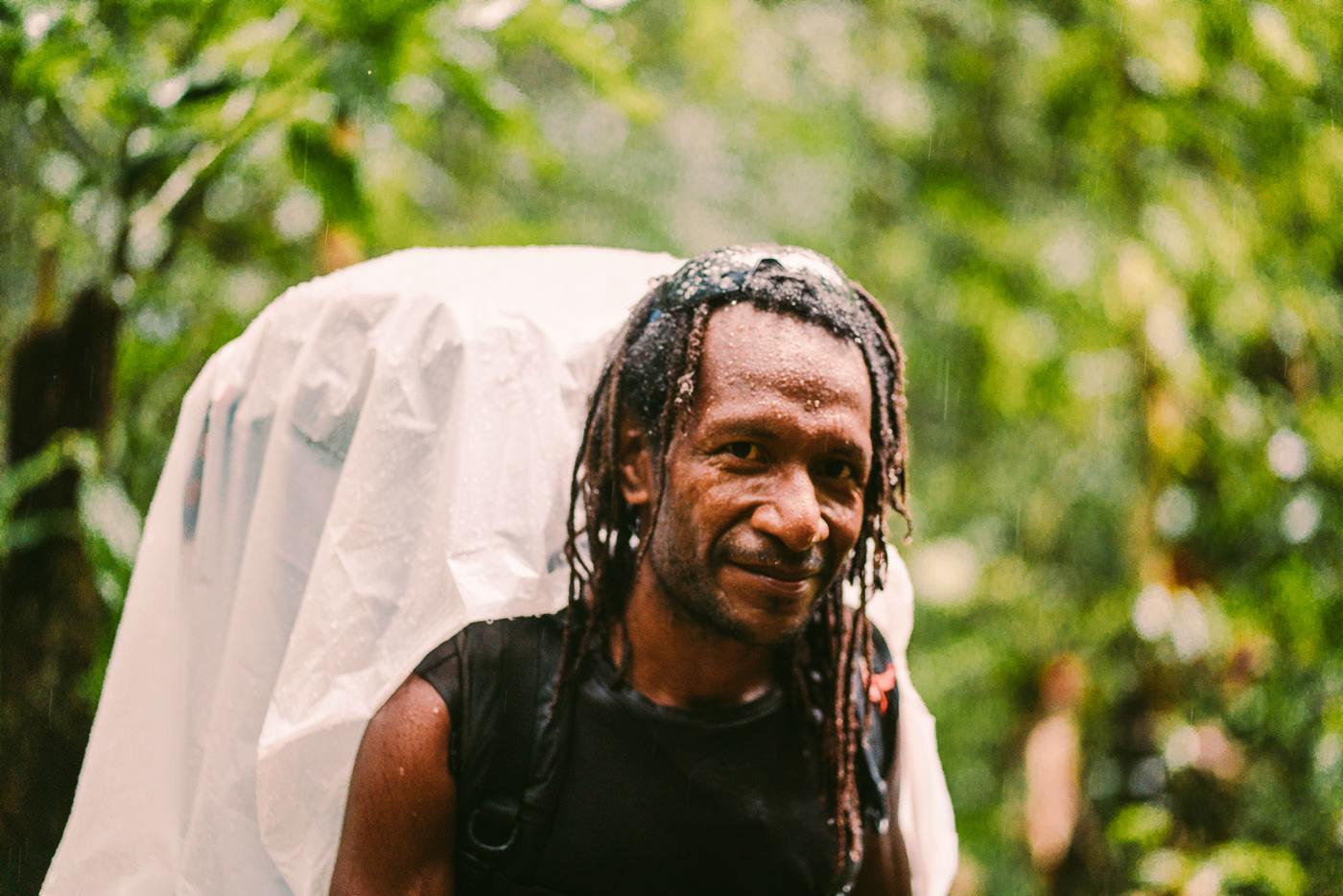
CAMPSITE GEAR & SLEEPING GEAR
1 CAMP/SLEEPING T-SHIRT
Like I mentioned before one (or two) dedicated hiking shirts and one that you keep clean and dry that is used for camp and to sleep in. You do not want to be sleeping wet so protect this camp/sleeping gear in a plastic bag inside your bag. It’s your key to a good night’s sleep.
1 CAMP SHORTS
Shorts to wear around camp and sleep in.
LONG SLEEVED JACKET
To keep warm at the camps or after I jumped in the river to wash, I kept warm with a light-weight down jacket. In the highlands of the Kokoda Trail, I also slept in this for added warmth. At night in an open-air hut at 1900m of altitude, the air can be chilly overnight so, with a lightweight sleeping bag, I slept in my down jacket on two of the nights. Other nights just my t-shirt at a lower altitude.
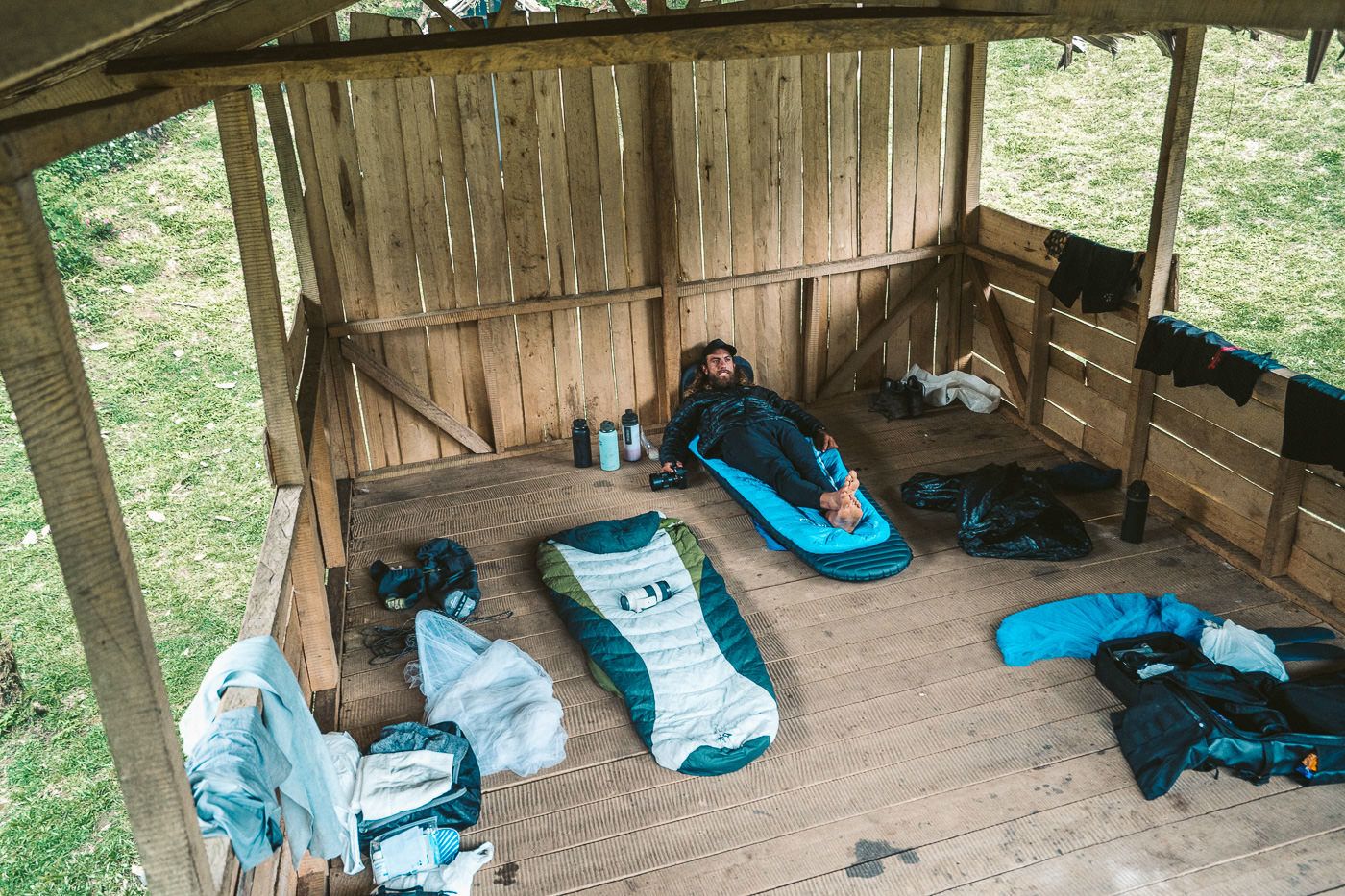
SWIMWEAR
We hiked in what we swam in and swam in what we hiked in. If it rains, you’ll spend most of the day wet and if it’s sunny, you’ll be sweaty. We wore board shorts which made for efficient swims in the river to cool off.
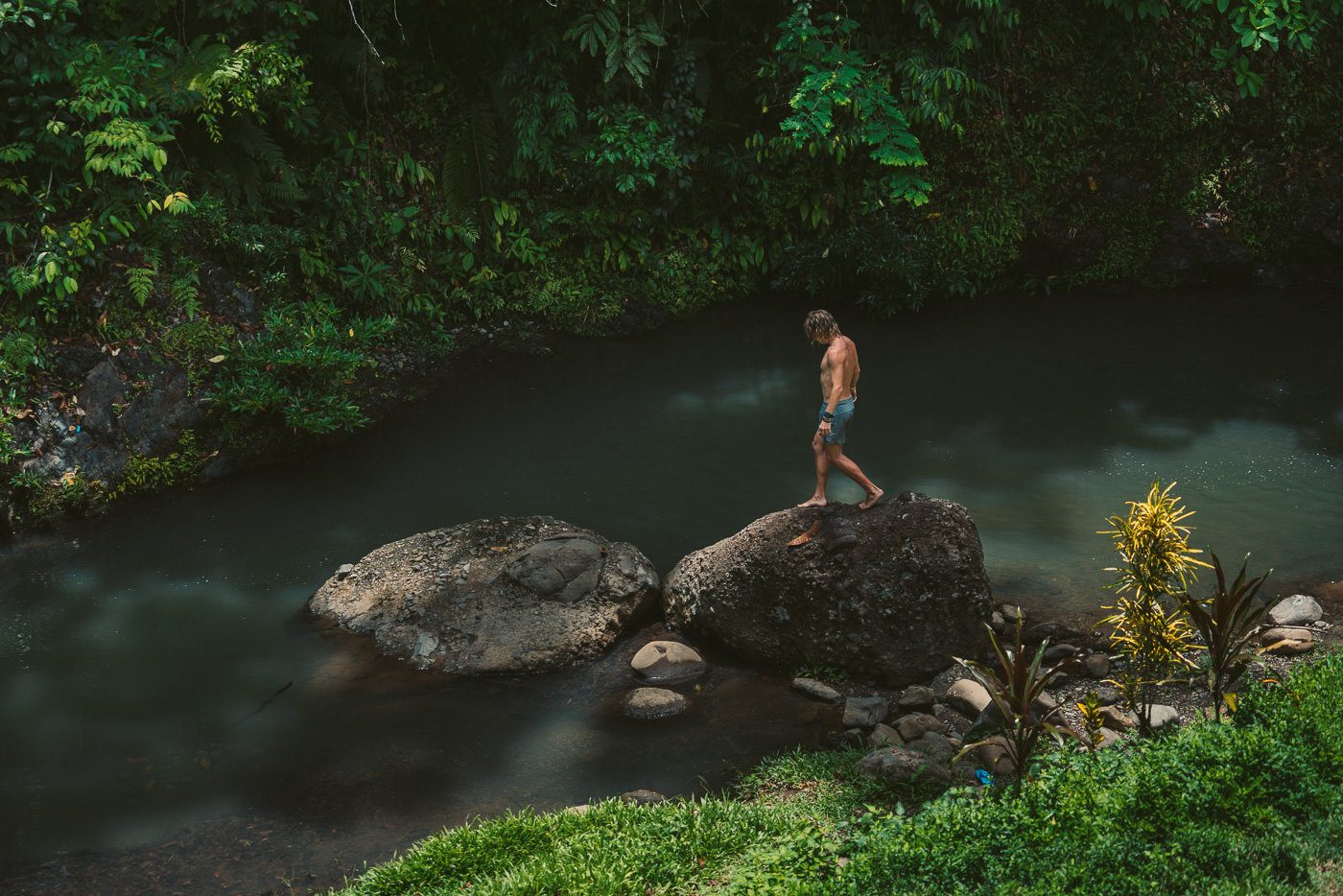
DRY SOCKS
Just like the camp t-shirt. Keep one pair of socks for camp hang-outs only.
QUICK-DRY TOWEL
Pack yourself a quick-dry towel that won’t take up much space so you can dry off after a surf or shower and then hang your towel out to quickly dry. Unlike normal towels the micro-fiber towels dry in under an hour so they aren’t damp in your backpack and start smelling as you progress along the trail. If it does start to get damp, leave it by the fire and you’ll be good to go.
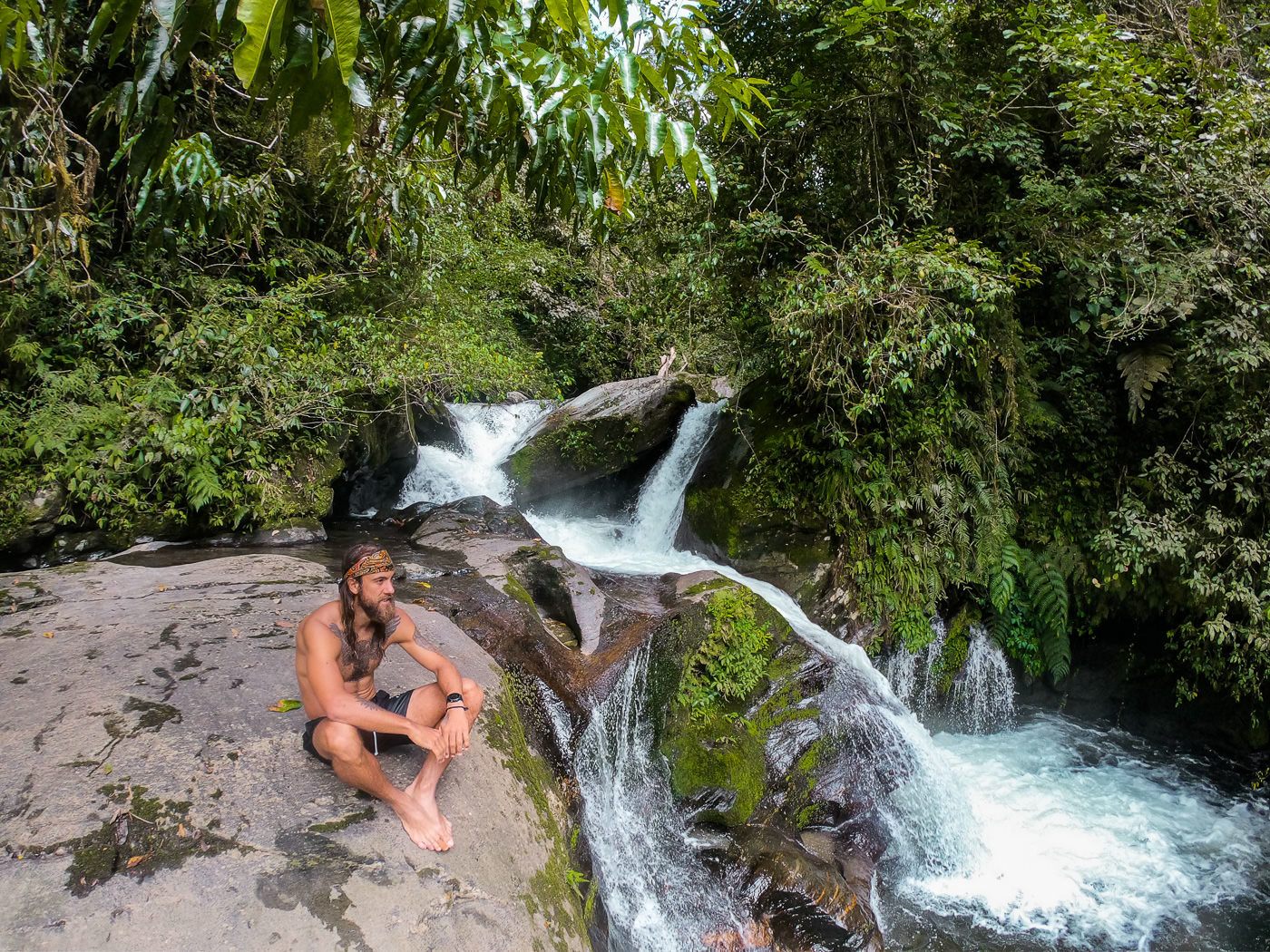
TENT
These were supplied by our guides but you can bring your own. This is something you should check prior to departure.
SLEEPING MAT
I used a super lightweight inflatable sleeping mat that gave me a full-body place to sleep that was well elevated off the ground. It was much better than a piece of foam and packed down into the size of two tennis balls.
SLEEPING BAG
I used a three-season sleeping bag, which meant it went down to 0-degrees capability. It was pretty thin, packed down super small and kept me just warm enough at night on the coldest night. I wore a jacket in it on two of the nights at 2000m of altitude.
SMALL PILLOW
You can get creative with your choice of pillow. Josh slept on a bag of his clothes or otherwise if you’re looking for a bit more comfort you can use a light-weight inflatable pillow. Having an inflatable pillow doesn’t take up any space or weight which is key when packing for an expedition. I used a Sea To Summit pillow that packs down to the size of one tennis ball and made my sleep very comfortable.
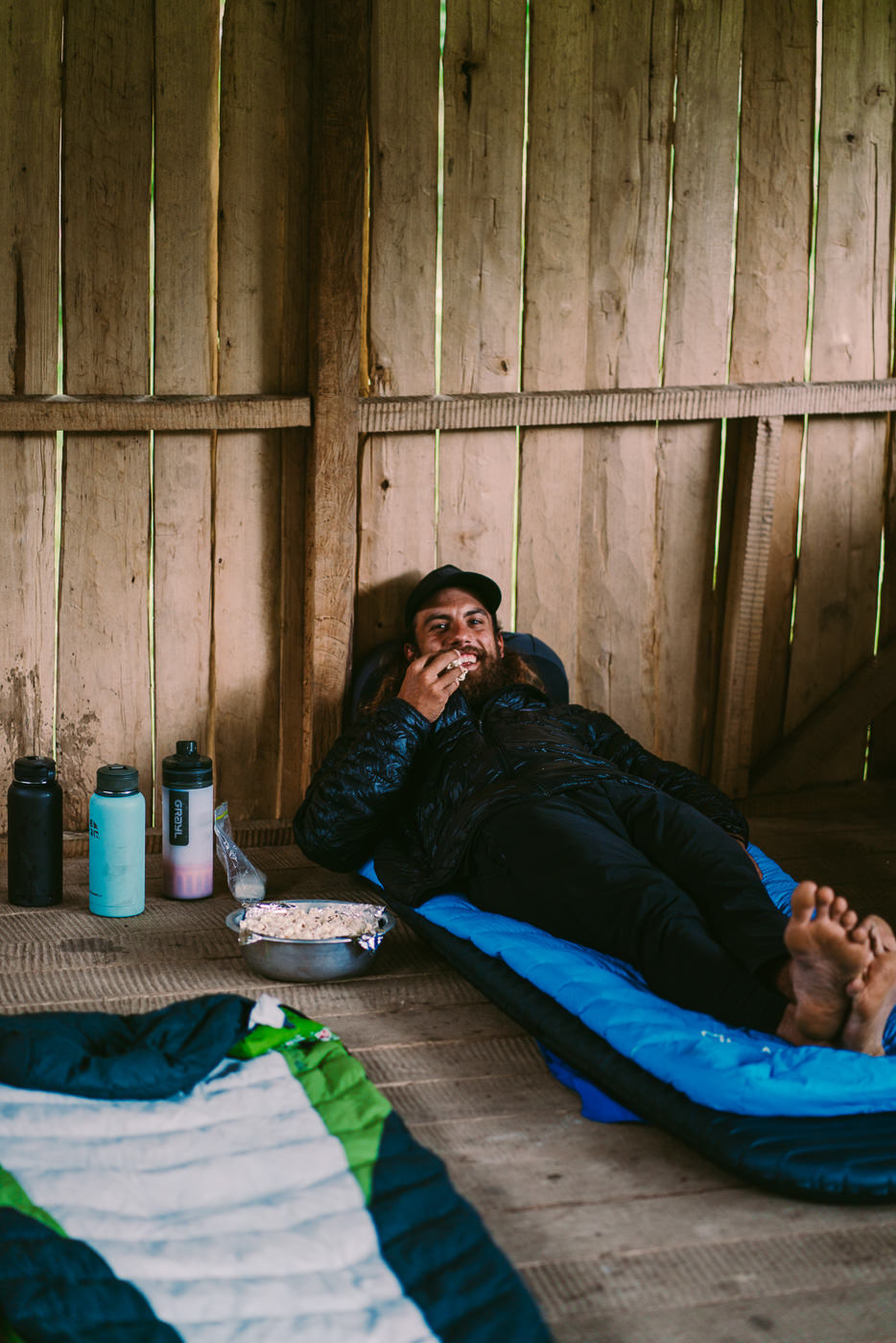
TOILET PAPER
Each campsite has a toilet but it is usually BYO toilet paper. They are drop-toilets so you can drop your paper in after you finish your business, which means, fortunately, you don’t have to pack out your poop paper for eight days.
PHONE
If you’re not carrying a camera, this will be the only use for your phone. There is no signal or connection along any of the Kokoda and it’s great. Rarely do we get a chance to disconnect from technology like you do on Kokoda. Embrace it and put the phone away for a while.
POWERBANK
Again, there is no electricity along the trail. Bring along a power bank or two so you can keep your GoPro, phone and head torch charged.
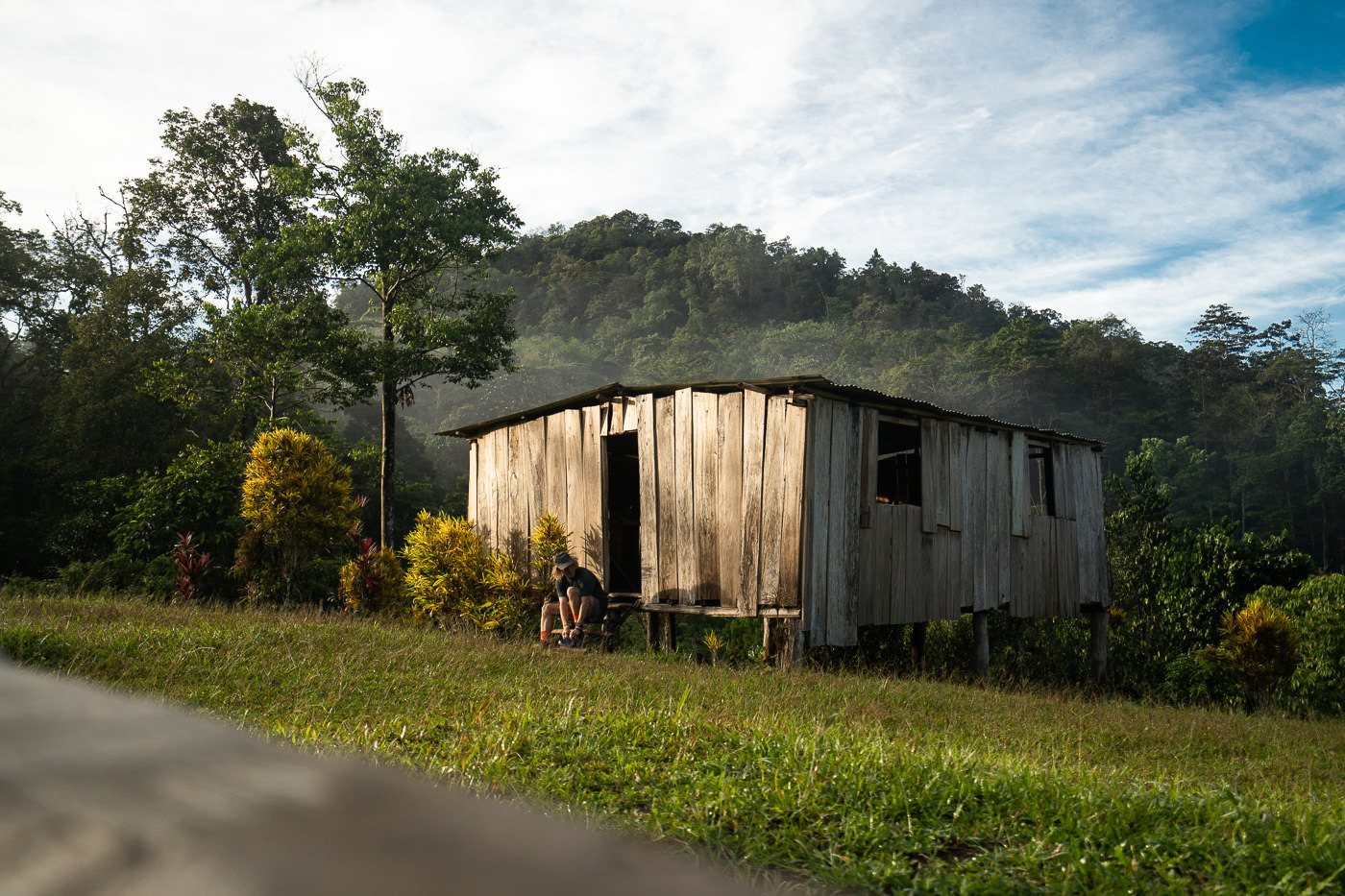
HEAD TORCH AND SPARE BATTERIES
To save buying batteries, you can get a rechargeable head torch. The head torch is useful when walking around the campsites at night or finding your way in the early morning. If you pack a battery pack, you’ll be able to charge your head torch each night.
GOPRO
The GoPro Hero 8 is a serious bang for your buck. There is nothing else that compares to it on the market right now. It allows you to take amazing underwater photos at a very affordable price. Pair this with a selfie stick capture some incredible angles from the trail on Kokoda Track. GoPros are also extremely durable, they’ll be able to take a lot more hits than you will so you don’t have to be afraid where you can and can’t take it.
TRAVEL INSURANCE
Kokoda Track is not a ‘risky’ adventure but travel insurance is always a necessity. Read up on what you’re covered for and keep a copy of it at the bottom of your bag. With high-quality medical support still not widespread across the PNG, it’s not a place you want to get stuck if you have any mishaps. There are some great hospitals in the PNG but if something unforeseen happens, you will be taken to the nearest clinic and you get what you get. I use Heymondo Travel Insurance because it allows me to be covered globally. I never know what I am doing a few months in advance so I don’t want to have to chop and change my travel insurance all the time depending on my travel plans. Now I can also itemize my valuable camera gear and laptop so that I can adventure hard without worrying about breaking things.
CAMERA GEAR I TOOK ON THE TRAIL
- DJI Mavic 2 PRO
- GoPro Hero 7
- Sony A7iii
- 16-35mm F4
- 24-105mm f4
- 85mm 1.8
- Peak Design camera clip for the backpack
- Batteries and Accessories
Obviously your camera set up is up to you but I will provide the following insights. A wild angle is great for the forest areas and capturing the entire scene. The 24-105mm was nice for some compression of mountains but there weren’t too many spots with mountain views compared to the amount of time spent in dense jungle.
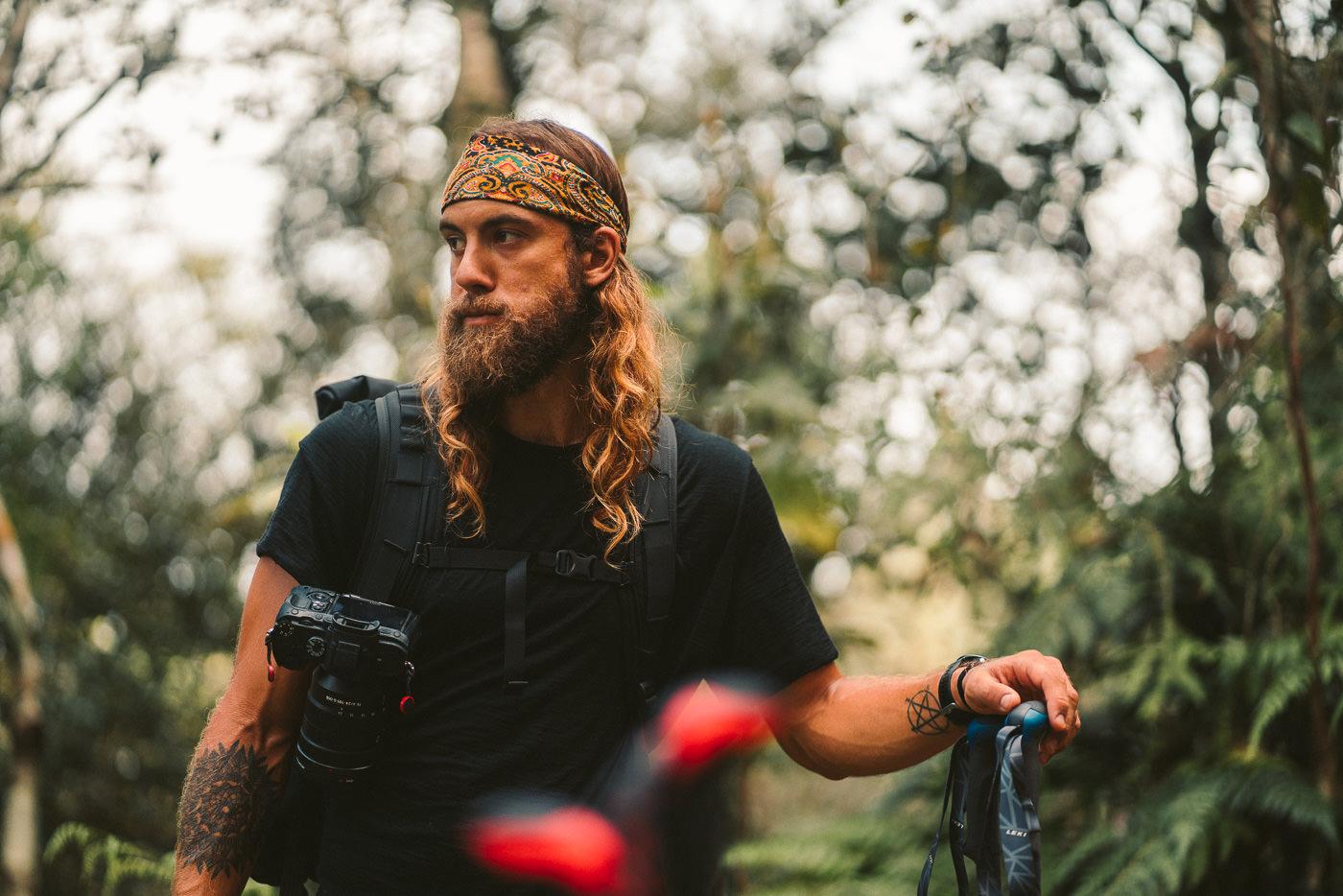
The drone was great but a lot to carry for eight days considering I could only use three batteries as there is nowhere to charge along the way. I shot some nice stuff at sunrise along the trail at one of the villages and then at the end in the jungle on day seven for a higher perspective.
The GoPro was great for filming and taking a few photos in the rain. It rained really heavy so all camera gear was put inside plastic bags and became hard to access. The GoPro became our only tool during these moments.
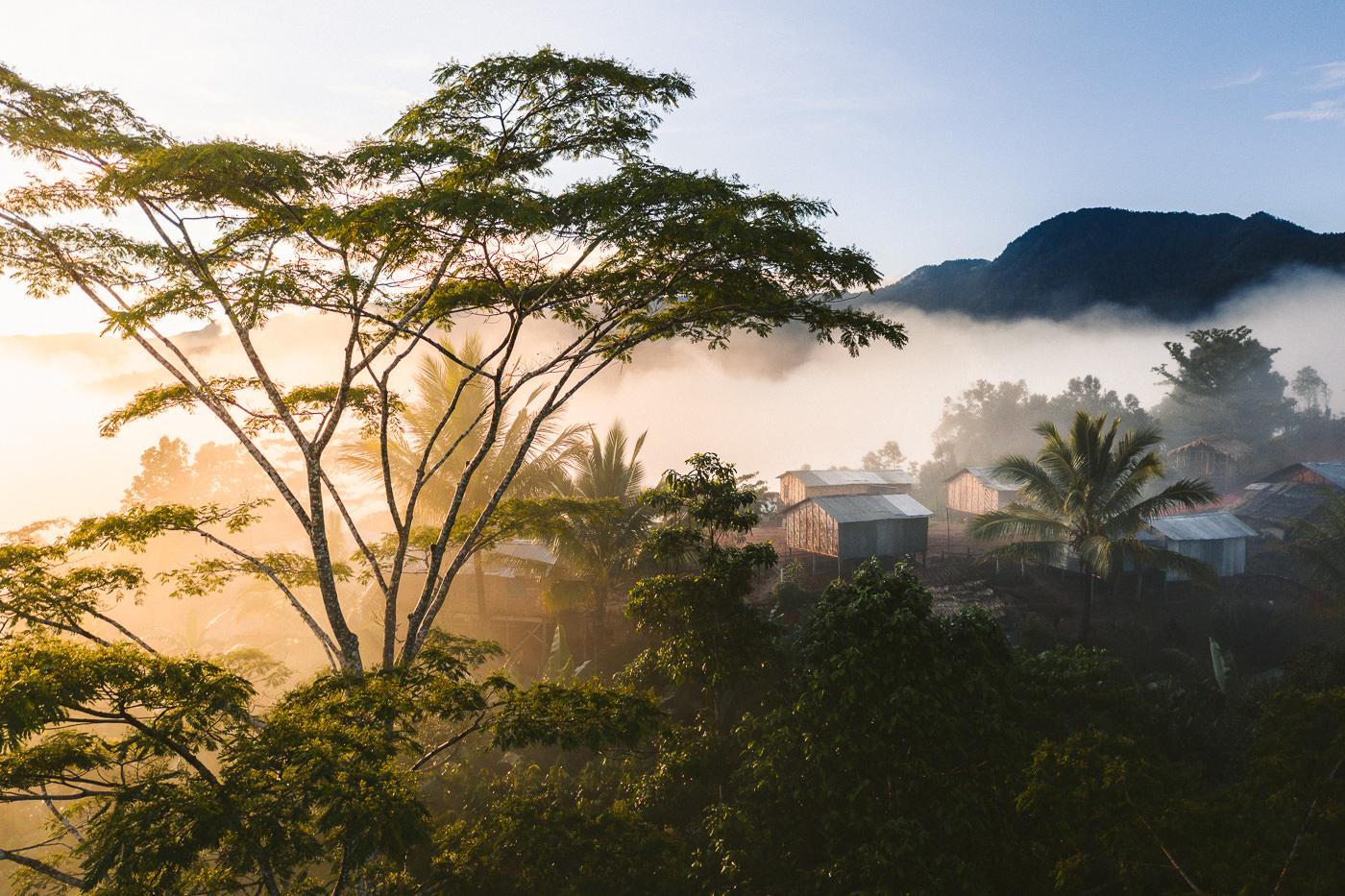
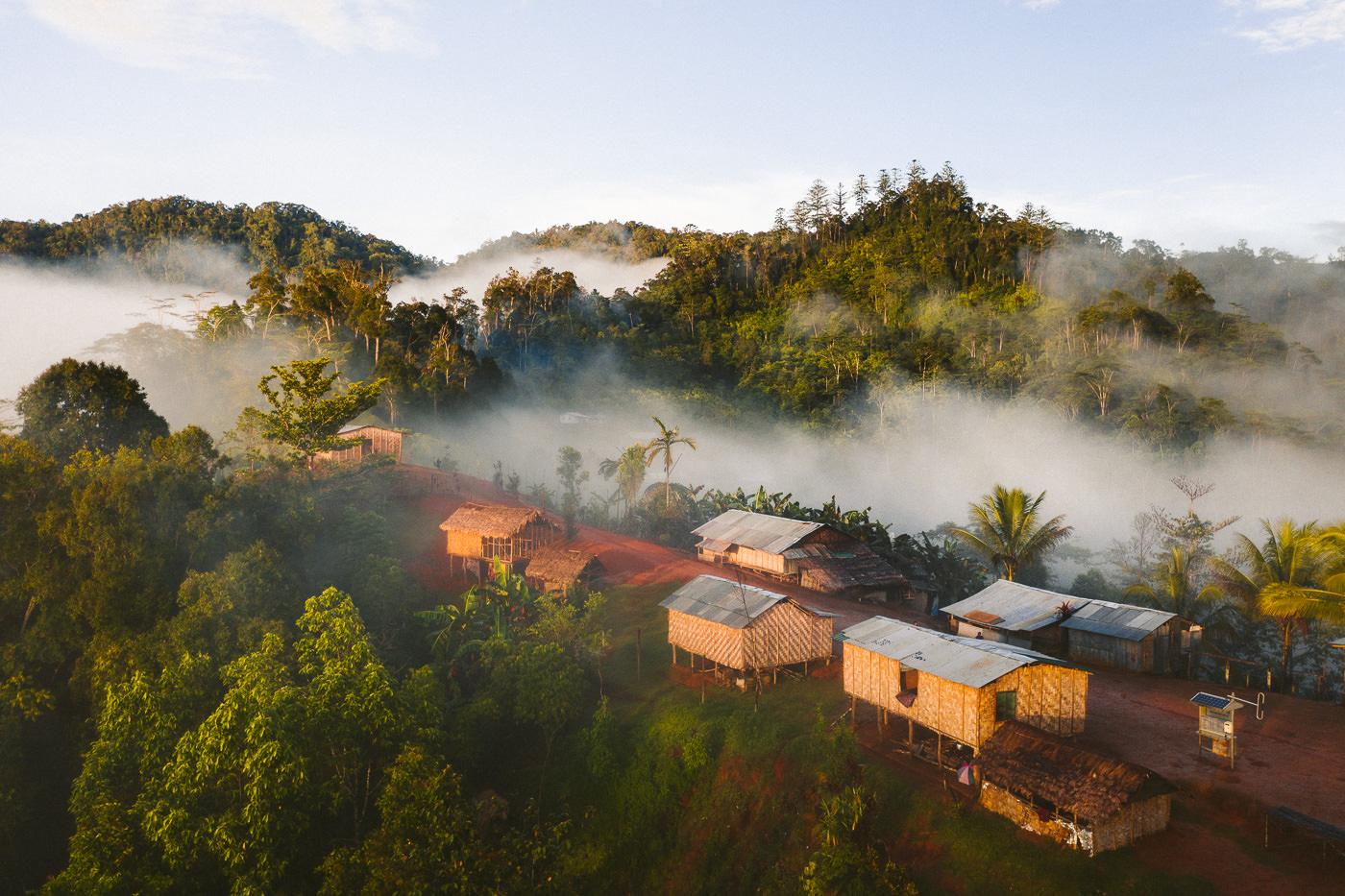

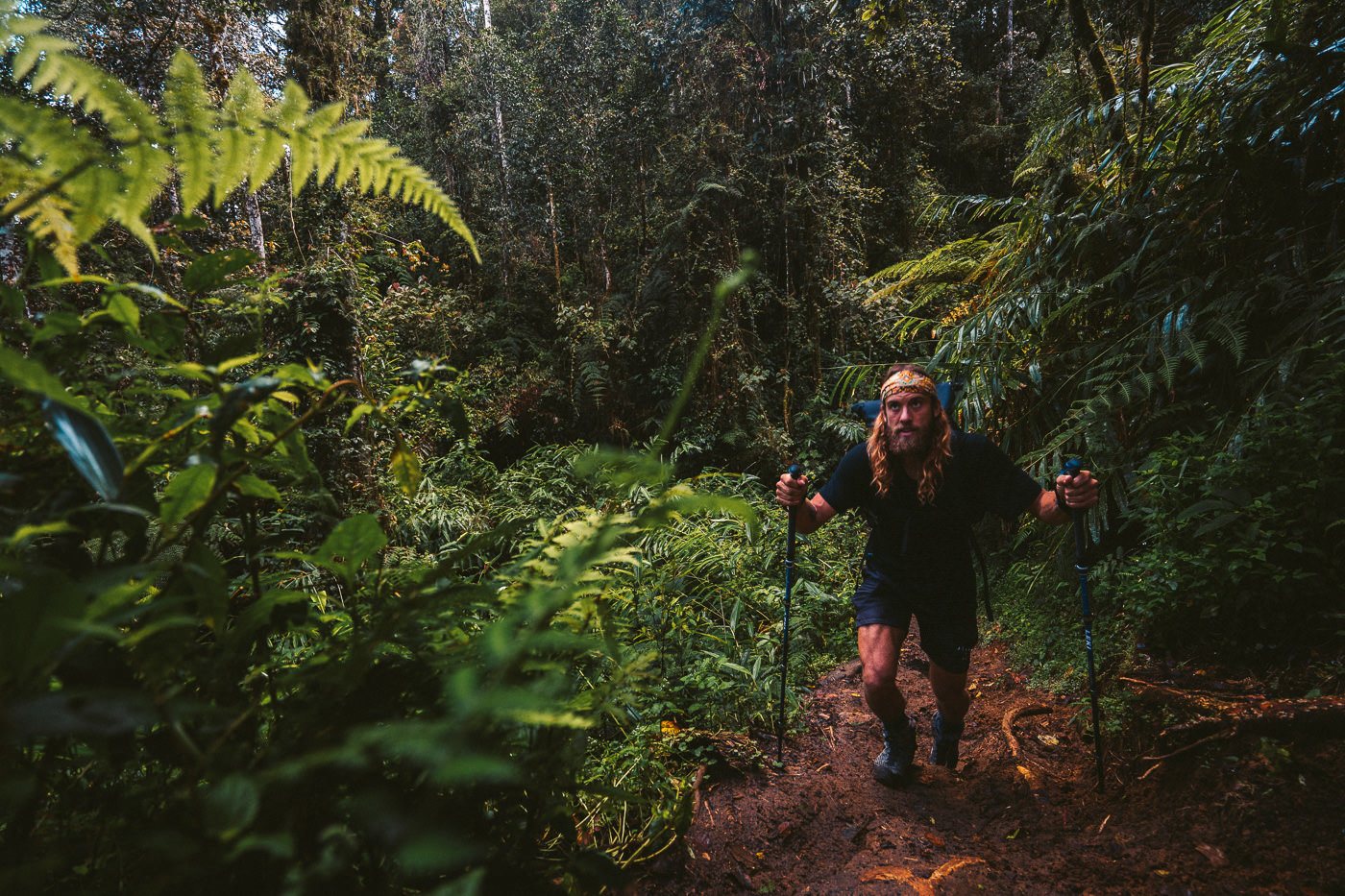
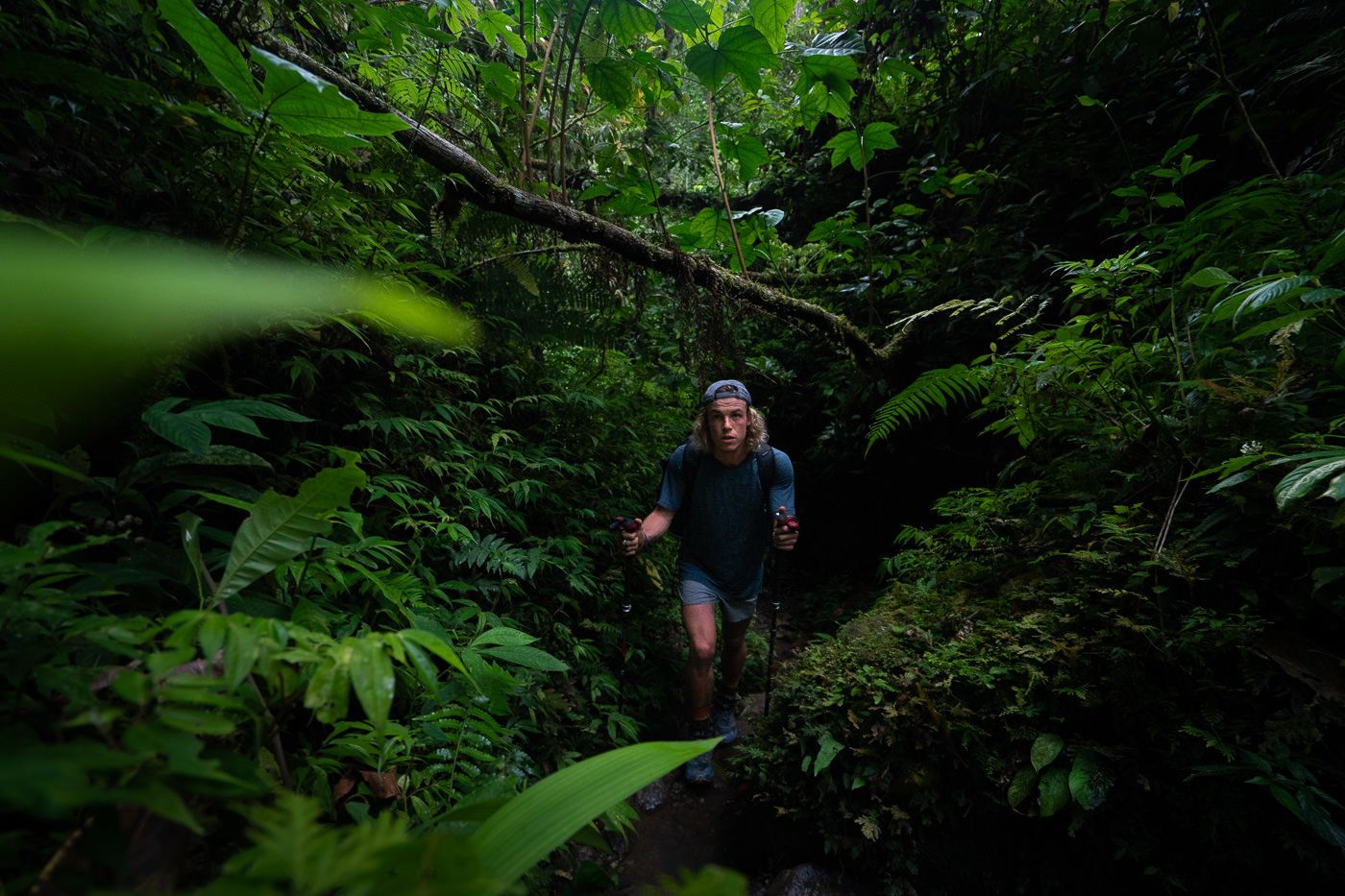
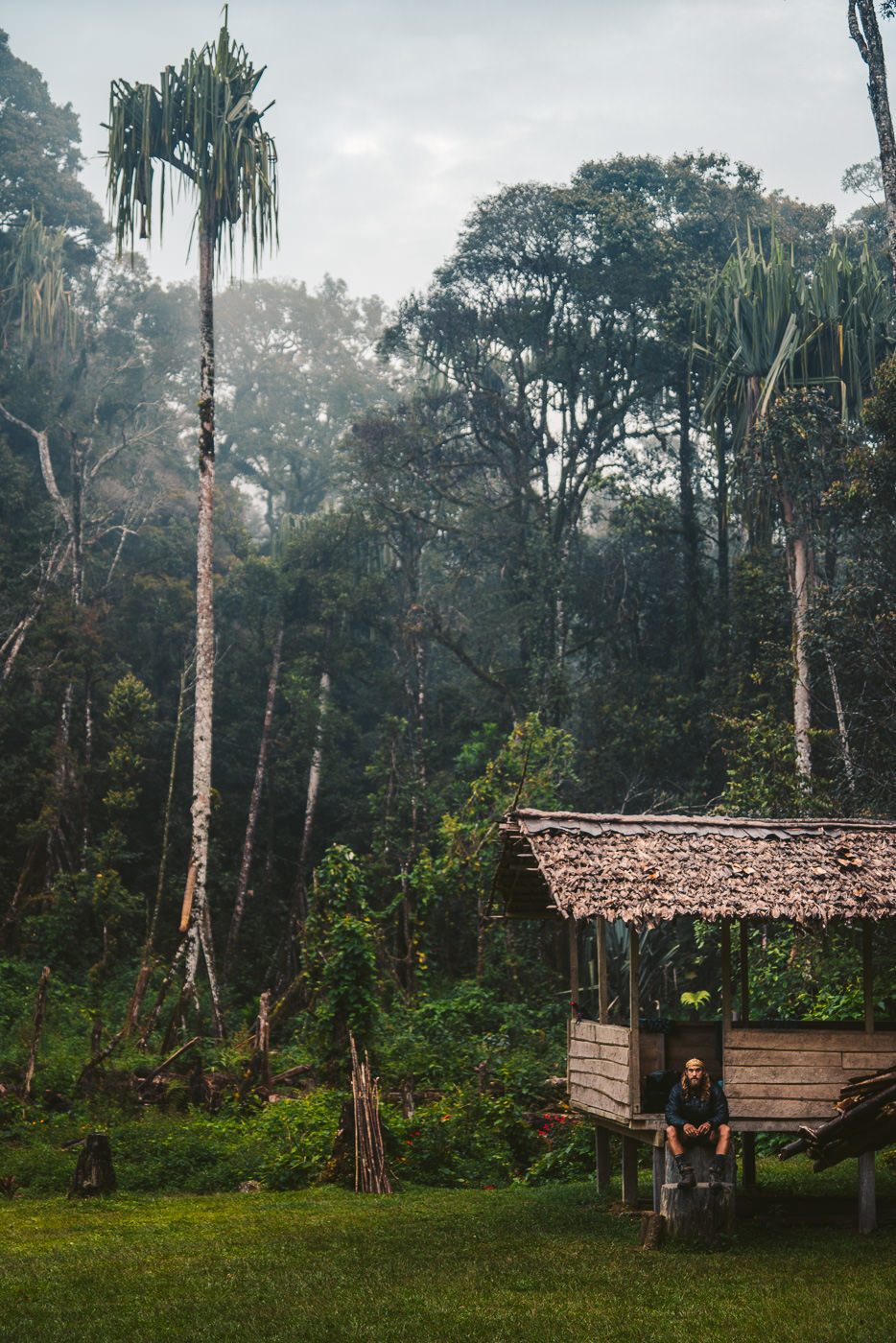
sue hemingway
Thursday 18th of March 2021
Thanks, great advice! Would love to do it, but a bit scared with COVID...and not getting any younger! But have done many hikes on Borneo when I lived in Brunei for 6 years up to 2012, so have a fair idea as to conditions. For difficulty, remoteness and just difference, try Ol Doinyo Lengai (Mountain of God) Maa Land, Tanzania. An active volcano, 2800mts pretty much straight up walked only at night to get to the rim at dawn and back before the sun is unbearable. It's close to the world's most important paleoanthropological sites at Olduvai Gorge, a collection of 3.6 million year old hominin footprints. Although Tanzania is probably risky with COVID. Wishing you many more amazing adventures! What a way to really LIVE! Cheers, Sue
Jackson
Sunday 21st of March 2021
heading to Ol Doinyo Lengai in a few days actually :)